What is Content Operations
A presentation at Content Operations in in London, UK by Rahel Anne Bailie
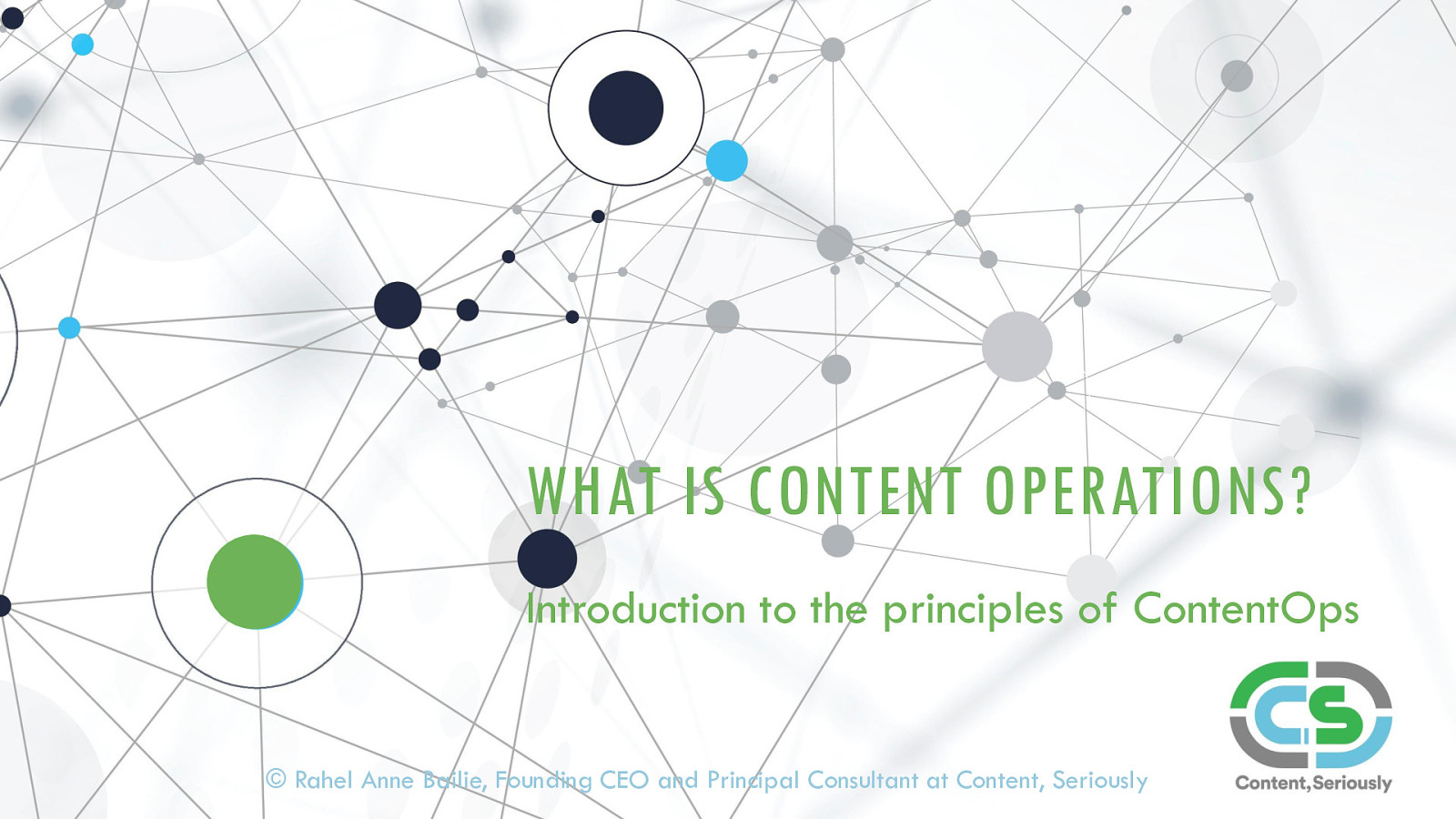
WHAT IS CONTENT OPERATIONS?
Introduction to the principles of ContentOps © Rahel Anne Bailie, Founding CEO and Principal Consultant at Content, Seriously
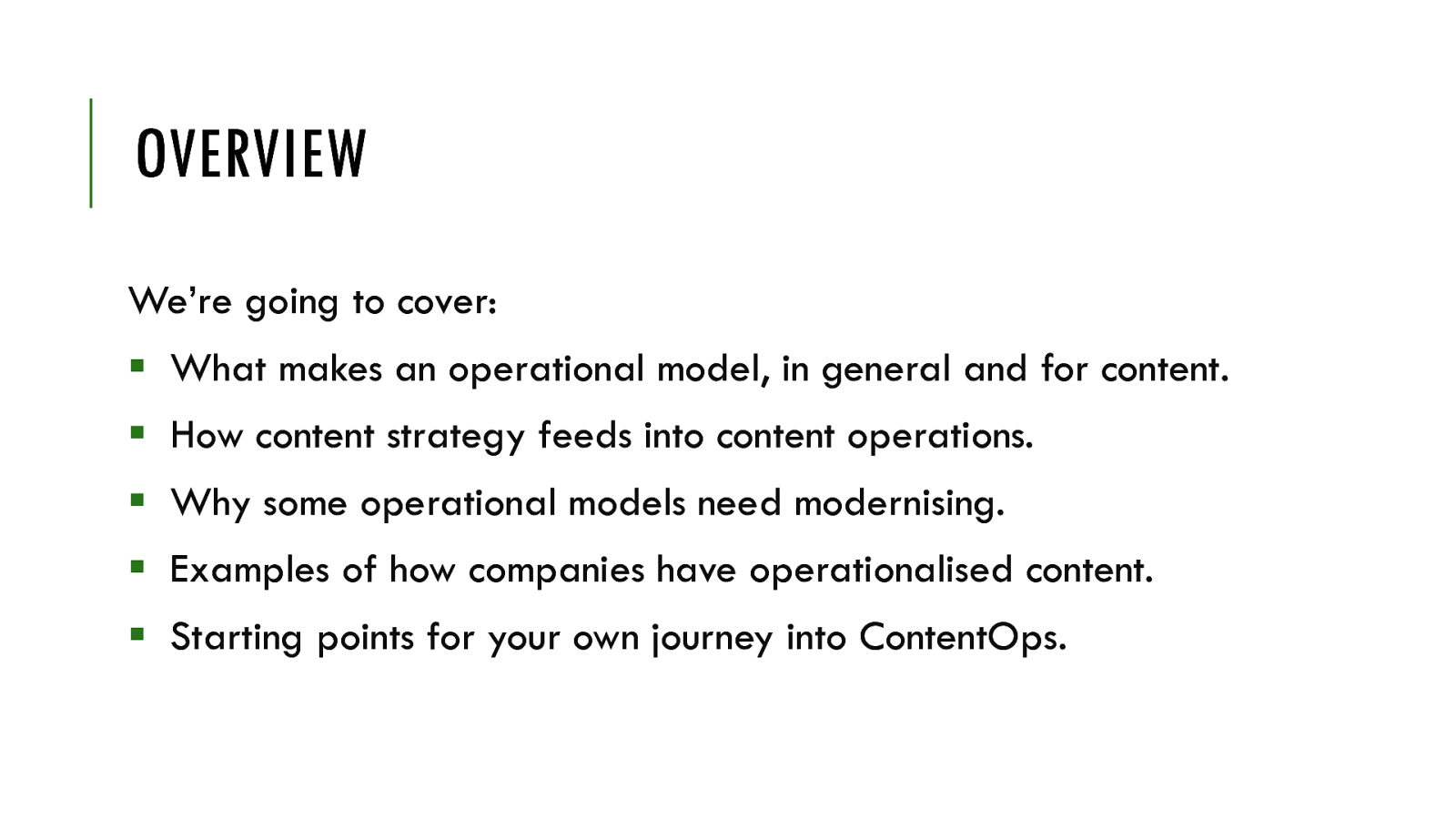
OVERVIEW
We’re going to cover: ▪ What makes an operational model, in general and for content. ▪ How content strategy feeds into content operations. ▪ Why some operational models need modernising. ▪ Examples of how companies have operationalised content. ▪ Starting points for your own journey into ContentOps.
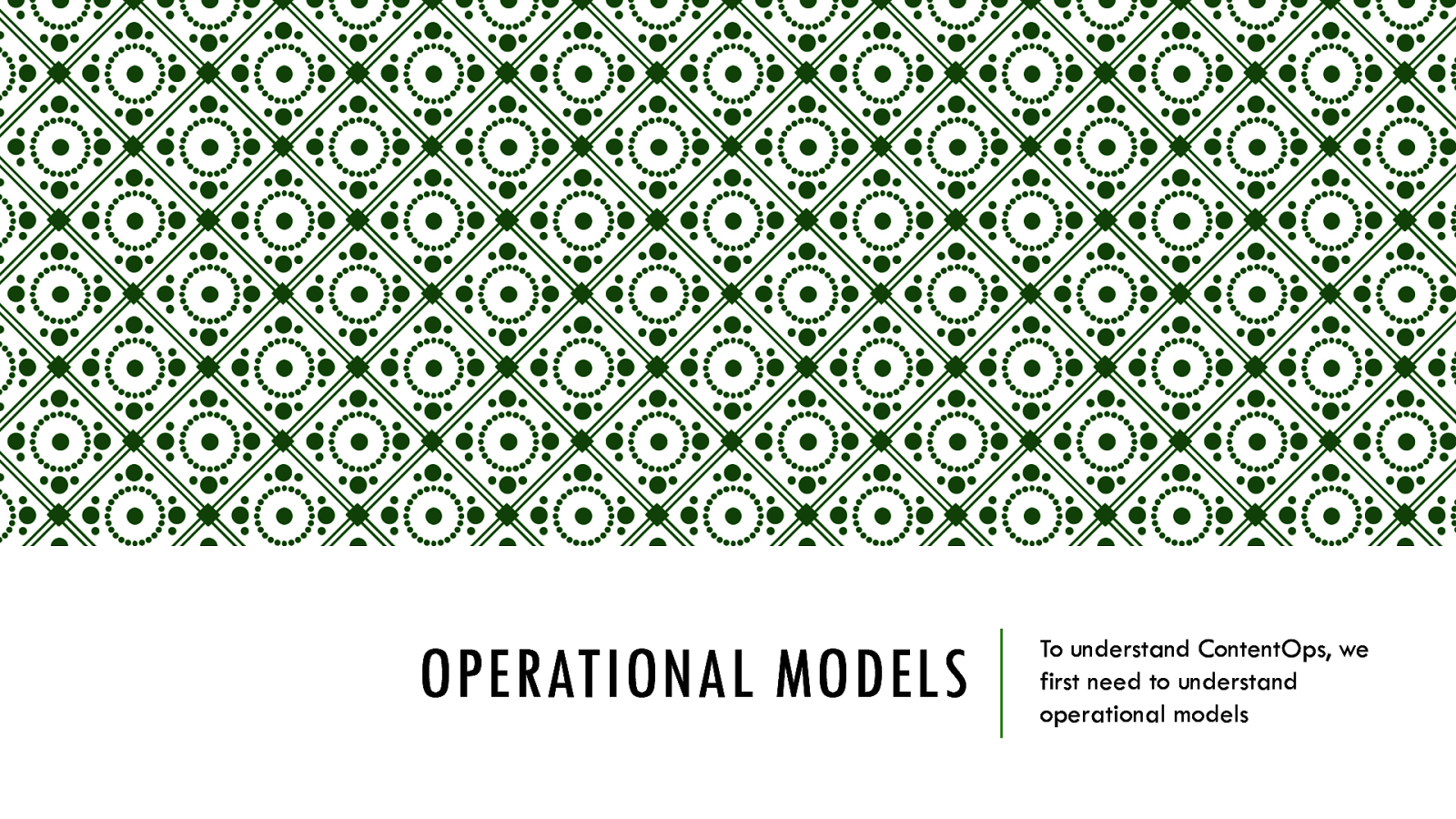
OPERATIONAL MODELS
To understand ContentOps, we first need to understand operational models
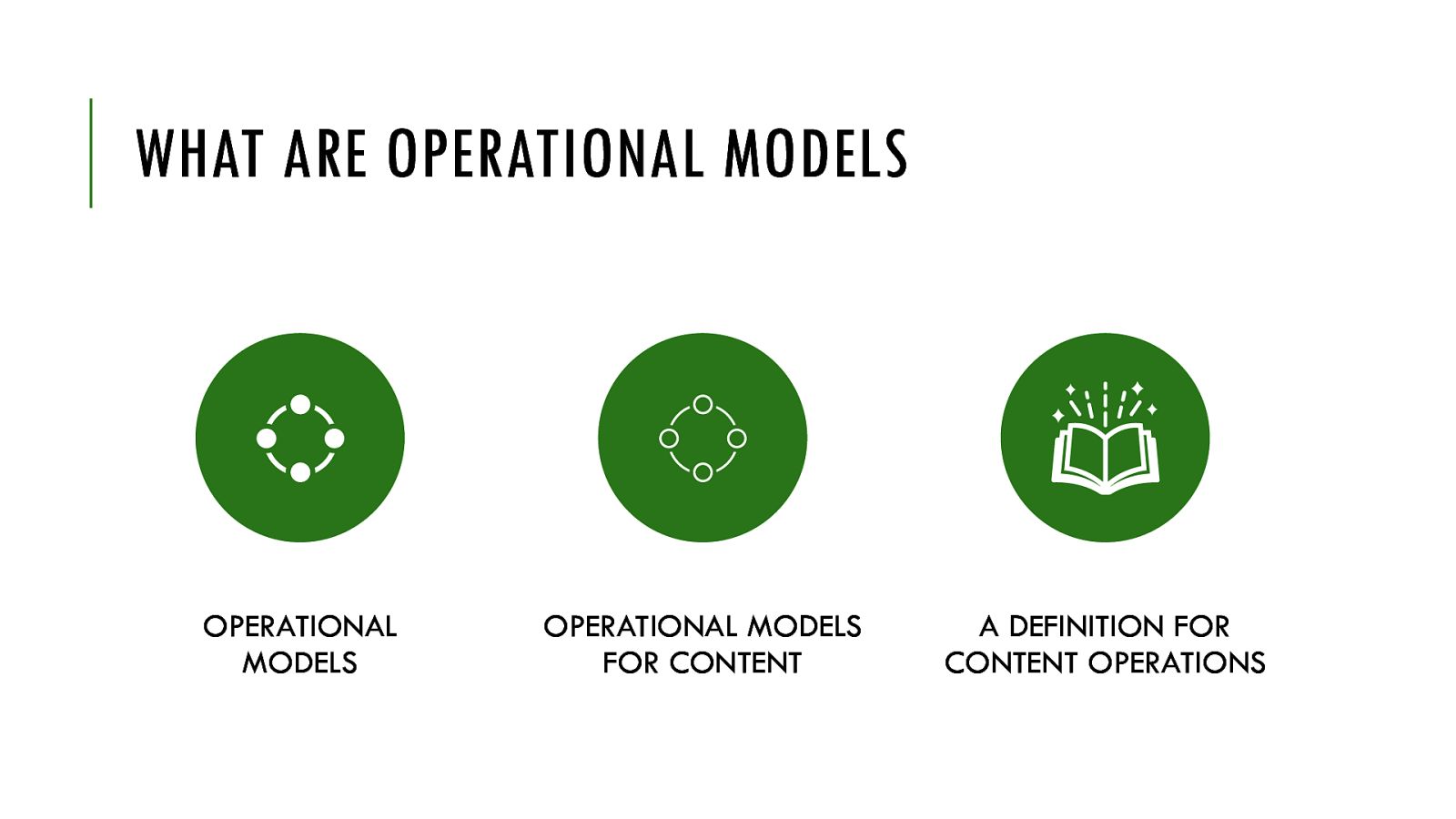
WHAT ARE OPERATIONAL MODELS
OPERATIONAL MODELS OPERATIONAL MODELS FOR CONTENT A DEFINITION FOR CONTENT OPERATIONS
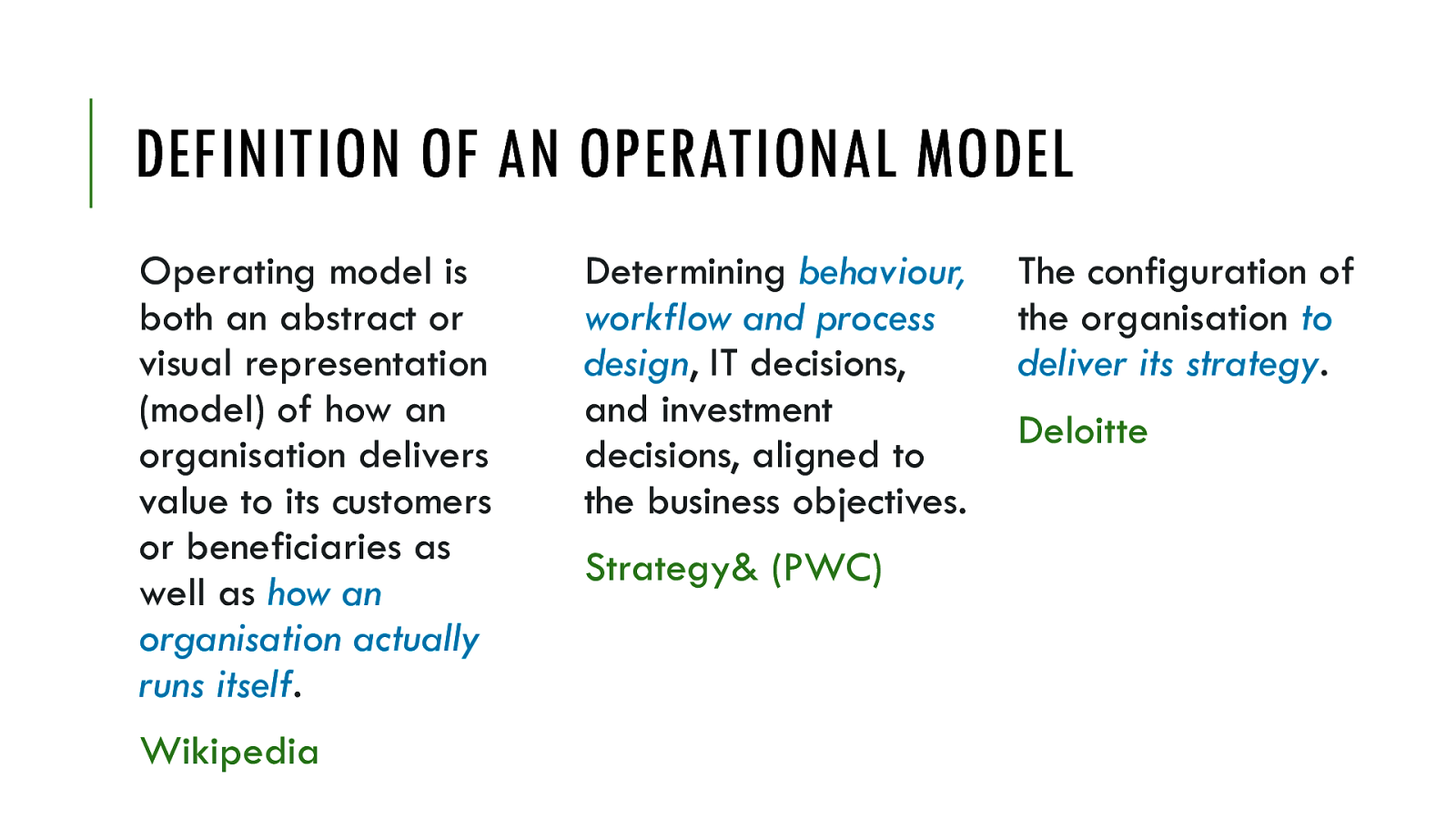
DEFINITION OF AN OPERATIONAL MODEL
Operating model is both an abstract or visual representation (model) of how an organisation delivers value to its customers or beneficiaries as well as how an organisation actually runs itself. Wikipedia Determining behaviour, workflow and process design, IT decisions, and investment decisions, aligned to the business objectives. Strategy& (PWC) The configuration of the organisation to deliver its strategy. Deloitte
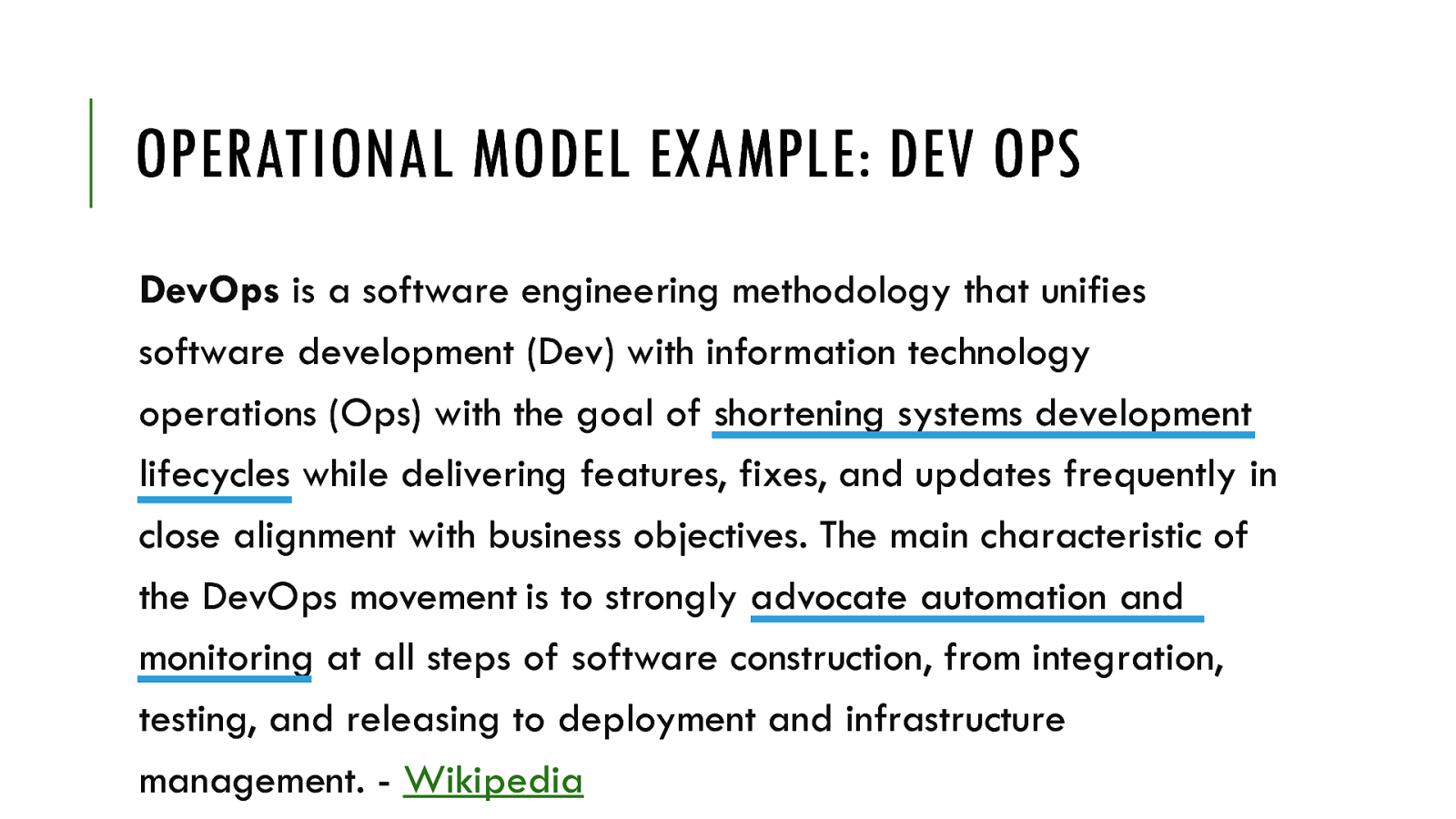
OPERATIONAL MODEL EXAMPLE: DEVOPS
DevOps is a software engineering methodology that unifies software development (Dev) with information technology operations (Ops) with the goal of shortening systems development lifecycles while delivering features, fixes, and updates frequently in close alignment with business objectives. The main characteristic of the DevOps movement is to strongly advocate automation and monitoring at all steps of software construction, from integration, testing, and releasing to deployment and infrastructure management. - Wikipedia
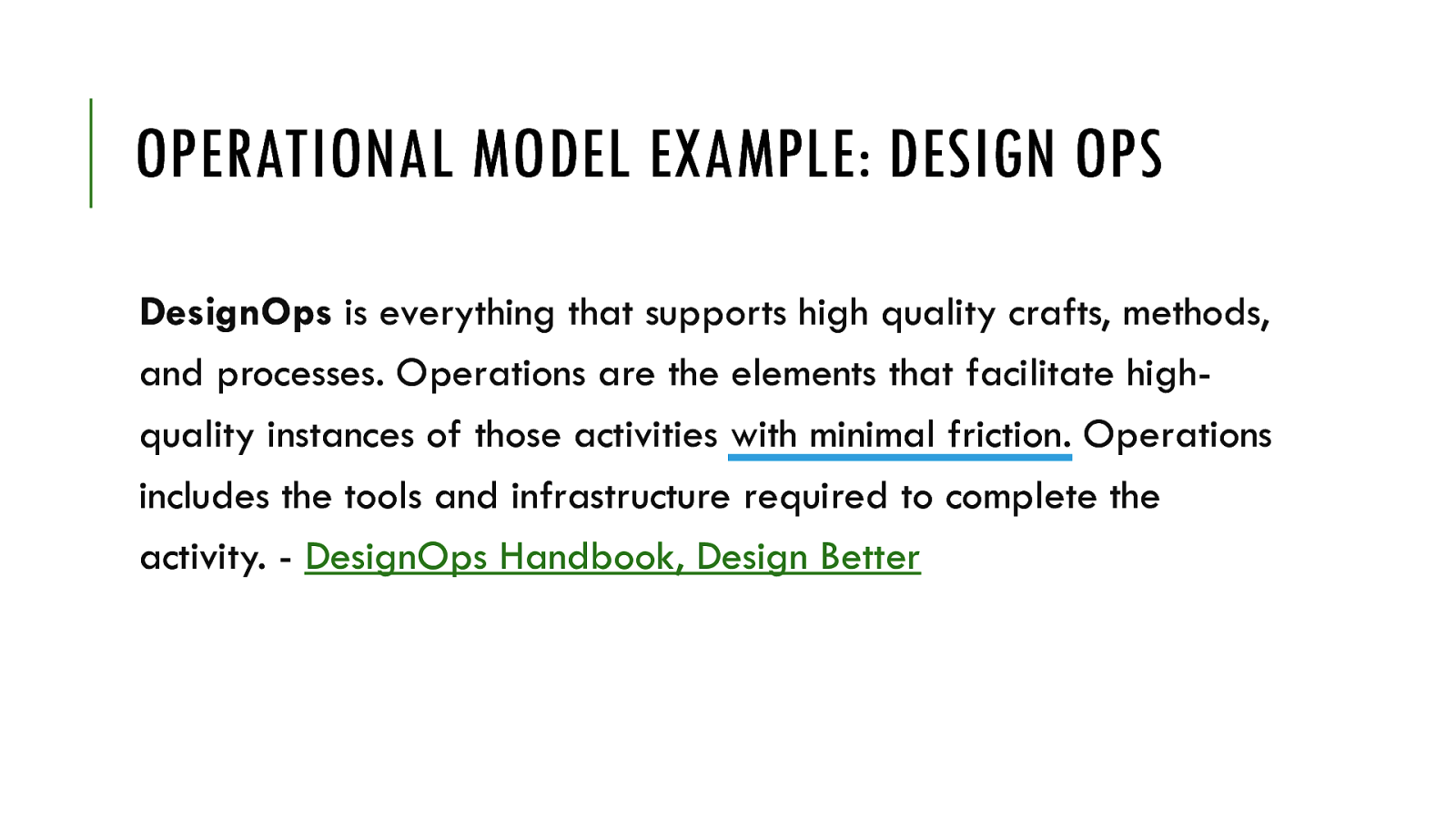
OPERATIONAL MODEL EXAMPLE: DESIGN OPS
DesignOps is everything that supports high quality crafts, methods, and processes. Operations are the elements that facilitate highquality instances of those activities with minimal friction. Operations includes the tools and infrastructure required to complete the activity. - DesignOps Handbook, Design Better
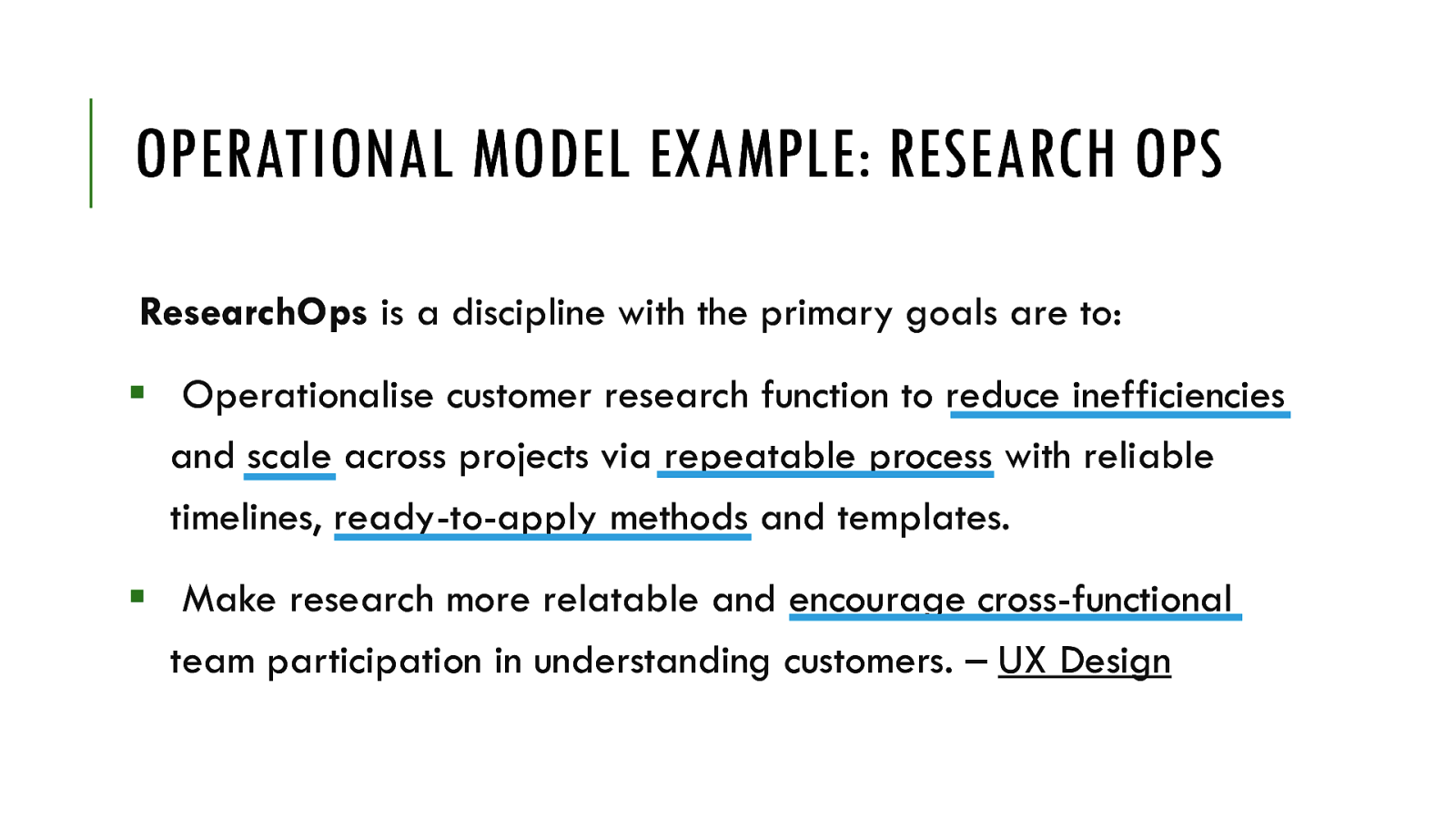
OPERATIONAL MODEL EXAMPLE: RESEARCH OPS
ResearchOps is a discipline with the primary goals are to: ▪ Operationalise customer research function to reduce inefficiencies and scale across projects via repeatable process with reliable timelines, ready-to-apply methods and templates. ▪ Make research more relatable and encourage cross-functional team participation in understanding customers. – UX Design
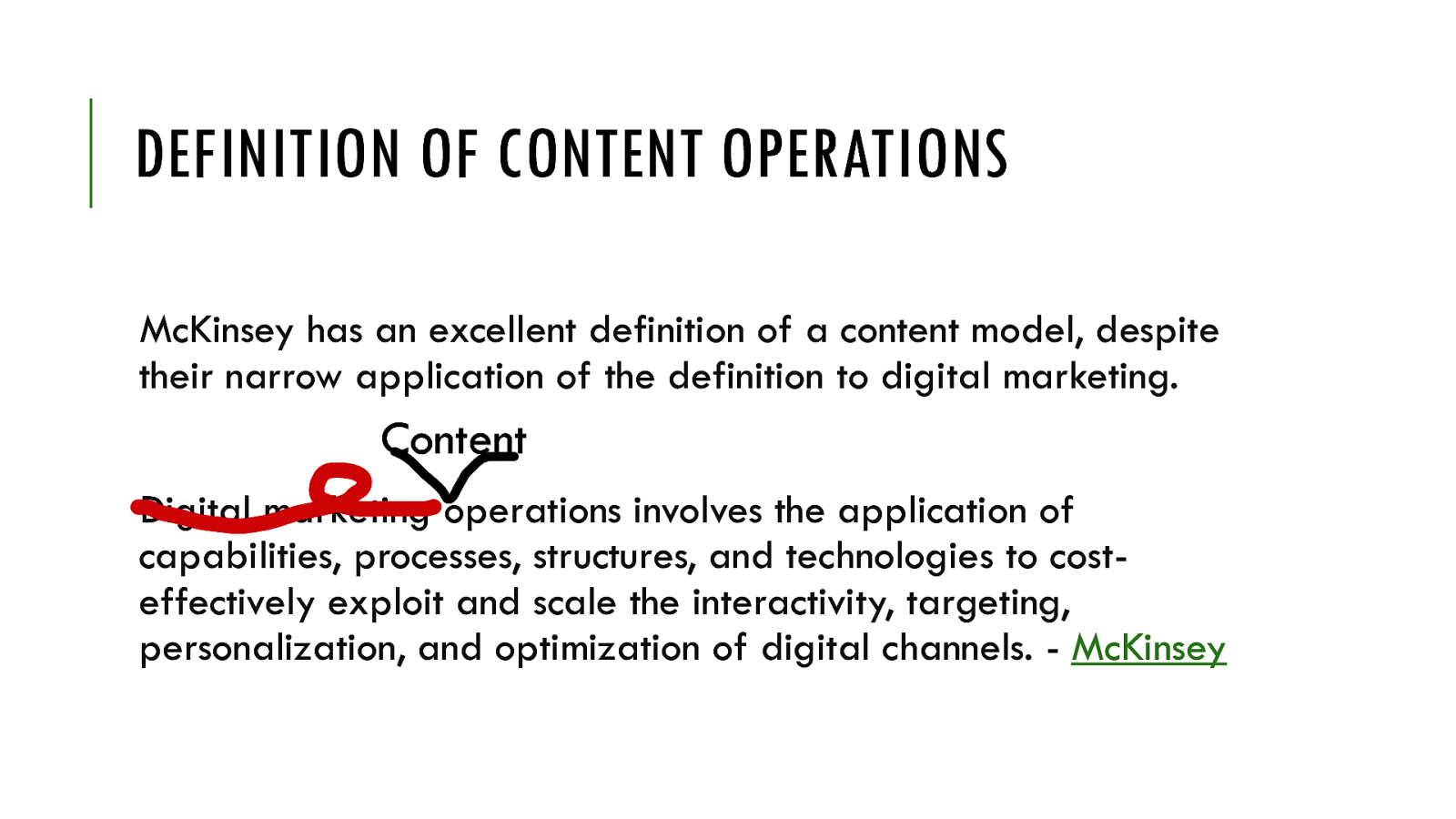
DEFINITION OF CONTENT OPERATIONS
McKinsey has an excellent definition of a content model, despite their narrow application of the definition to digital marketing. Content Digital marketing operations involves the application of capabilities, processes, structures, and technologies to costeffectively exploit and scale the interactivity, targeting, personalization, and optimization of digital channels. - McKinsey
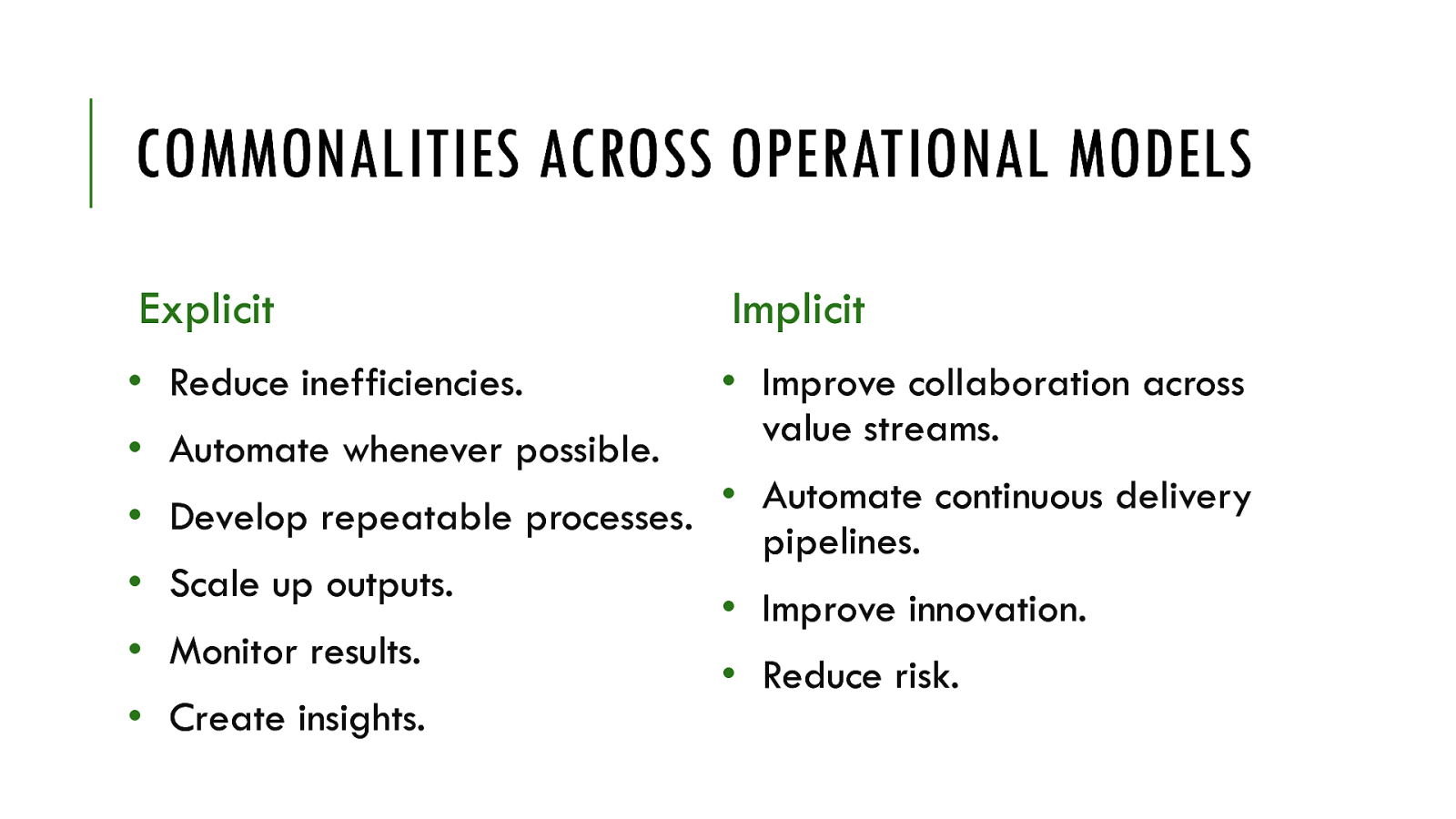
COMMONALITIES ACROSS OPERATIONAL MODELS
Explicit • Reduce inefficiencies. • Automate wherever possible. • Develop repeatable processes. • Scale up outputs. • Monitor results. • Create insights.
Implicit • Improve collaboration across value streams. • Automate continuous delivery pipelines. • Improve innovation. • Reduce risk.
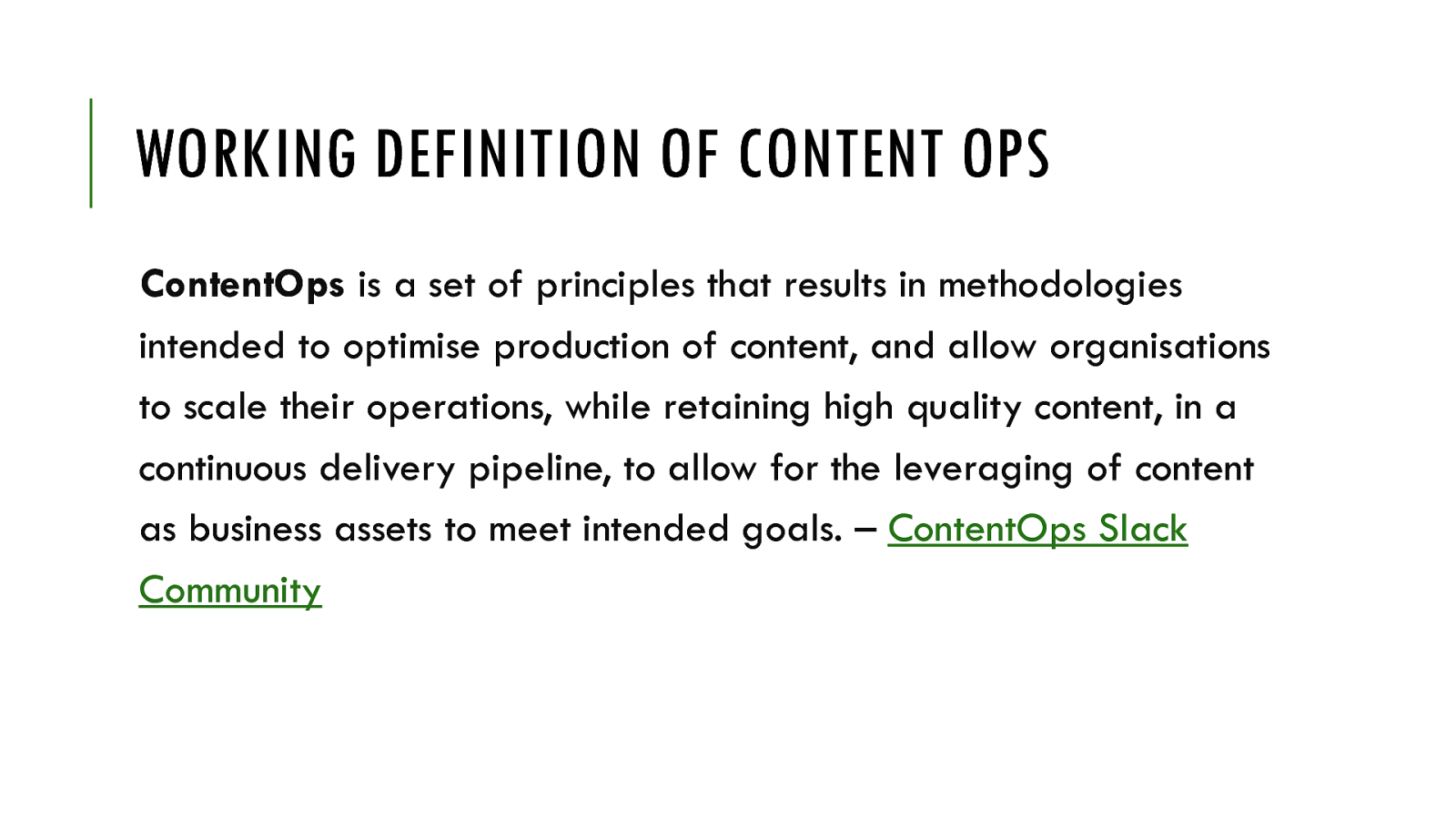
WORKING DEFINITION OF CONTENT OPS
ContentOps is a set of principles that results in methodologies intended to optimise production of content, and allow organisations to scale their operations, while retaining high quality content, in a continuous delivery pipeline, to allow for the leveraging of content as business assets to meet intended goals. – ContentOps Slack Community
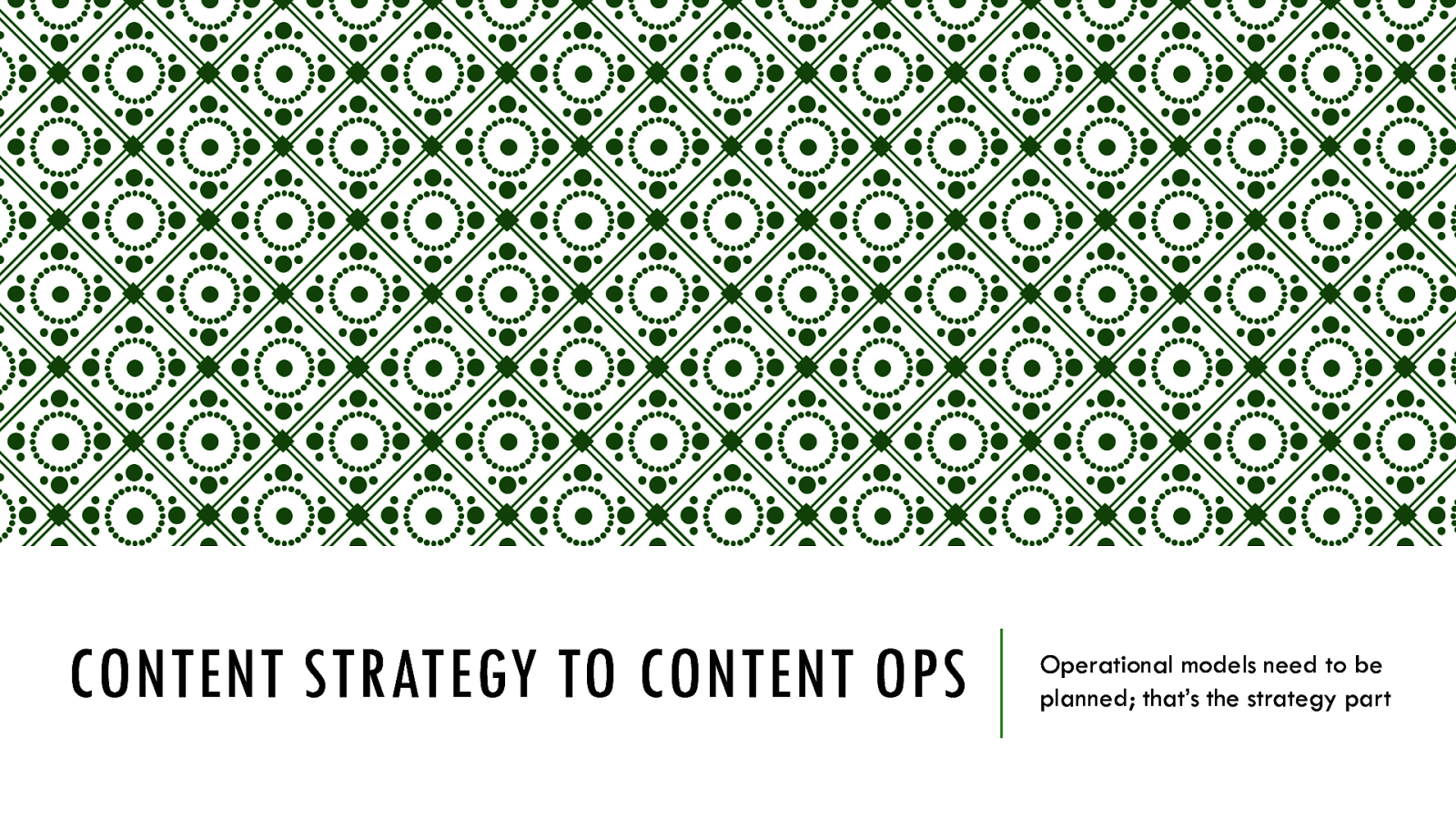
CONTENT STRATEGY TO CONTENT OPS
Operational models need to be planned; that’s the strategy part
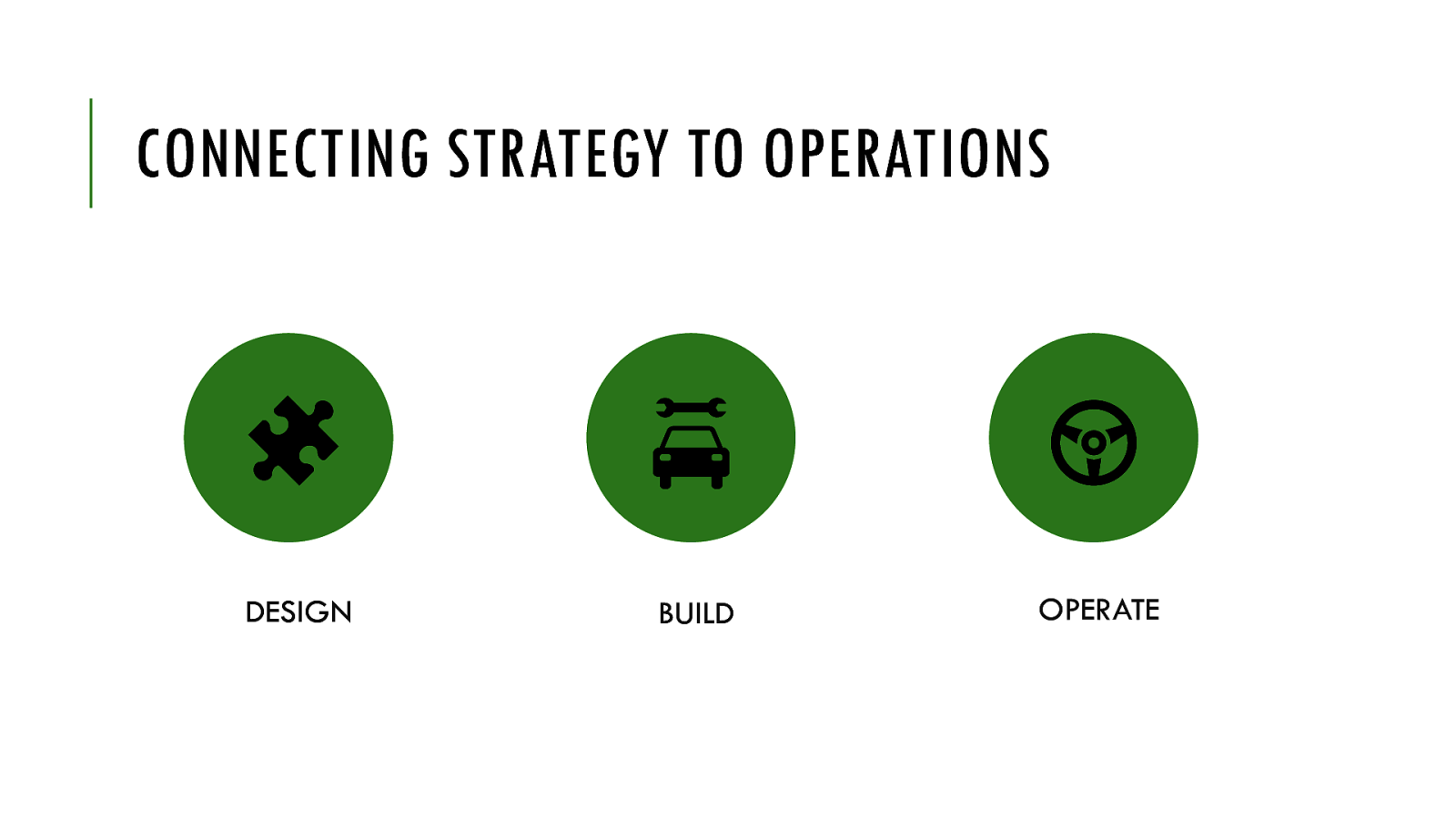
CONNECTING STRATEGY TO OPERATIONS
DESIGN BUILD OPERATE
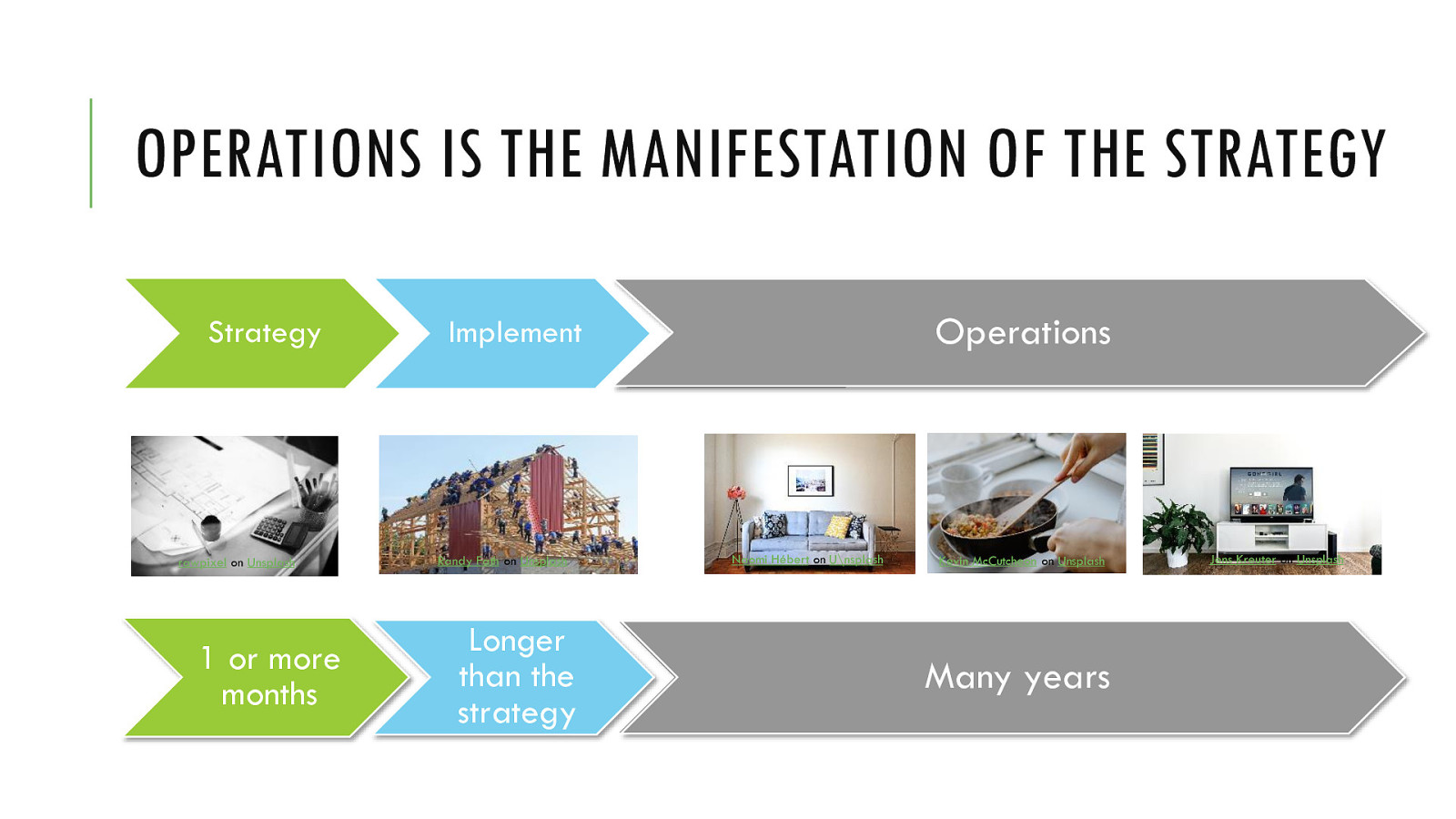
OPERATIONS IS THE MANIFESTATION OF THE STRATEGY
Strategy - 1 or more months Implement - Longer than the strategy Operations - Many years
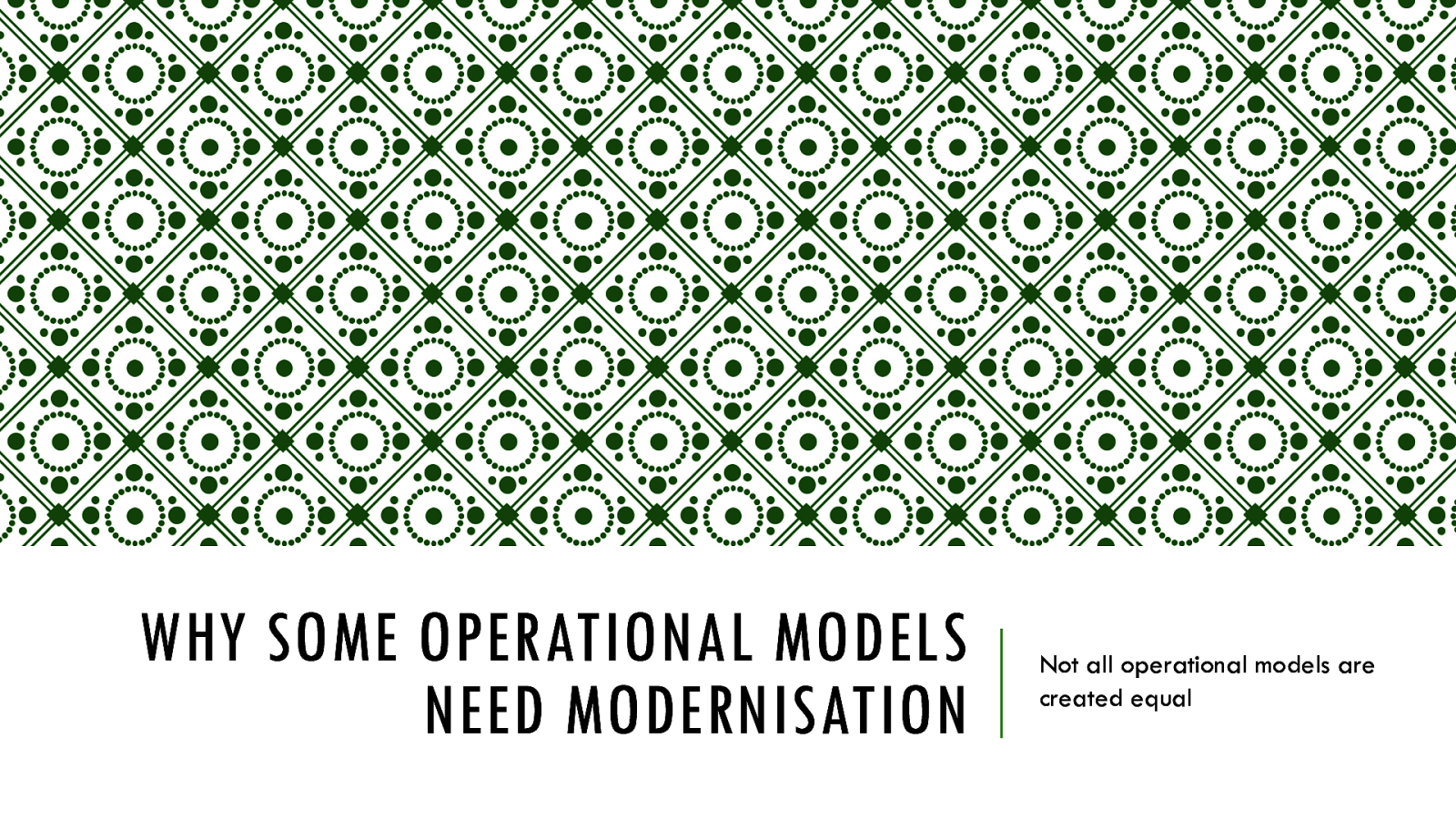
WHY SOME OPERATIONAL MODELS NEED MODERNISATION
Not all operational models are created equal
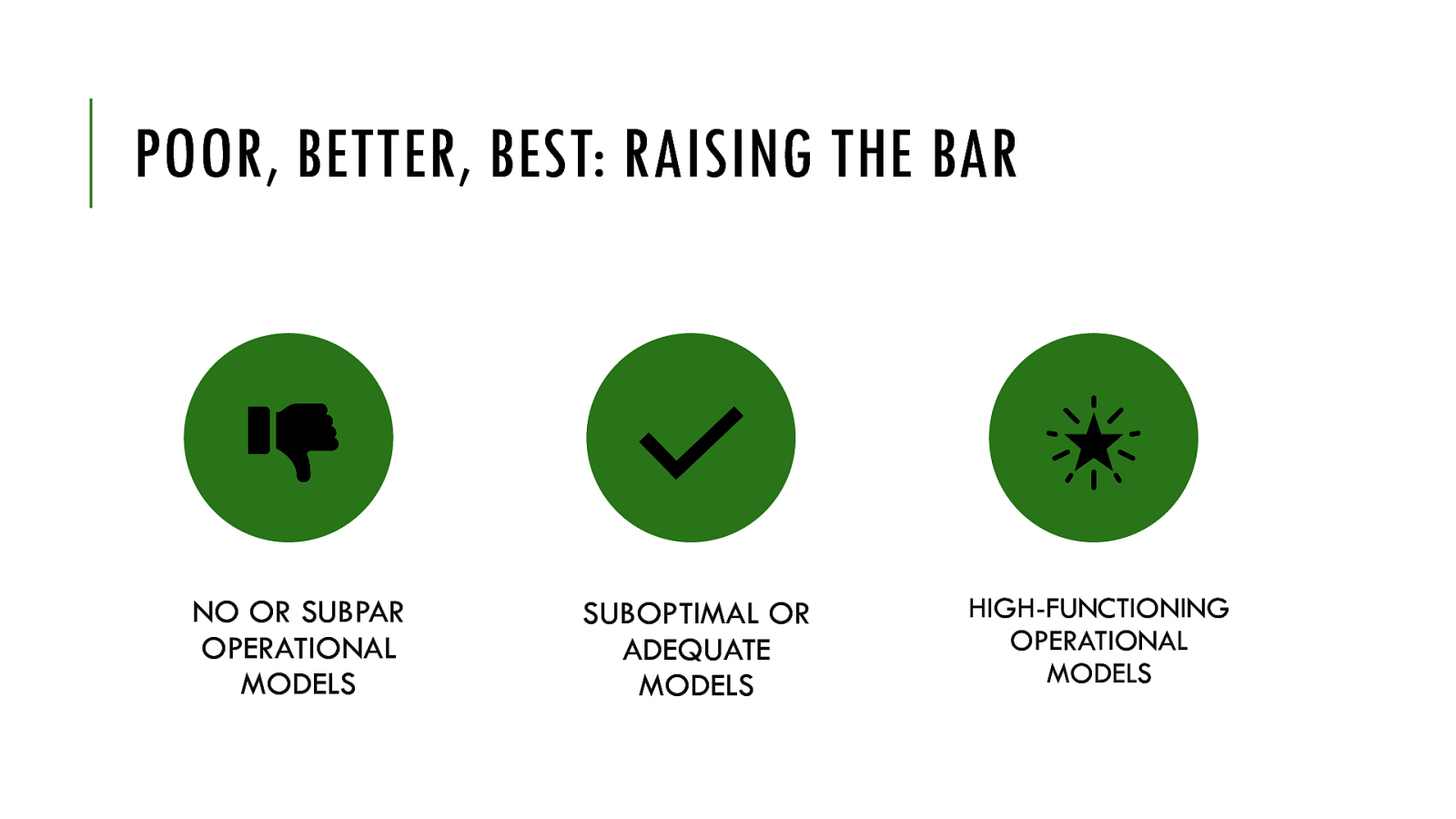
POOR, BETTER, BEST: RAISING THE BAR
NO OR SUBPAR OPERATIONAL MODELS SUBOPTIMAL OR ADEQUATE MODELS HIGH-FUNCTIONING OPERATIONAL MODELS
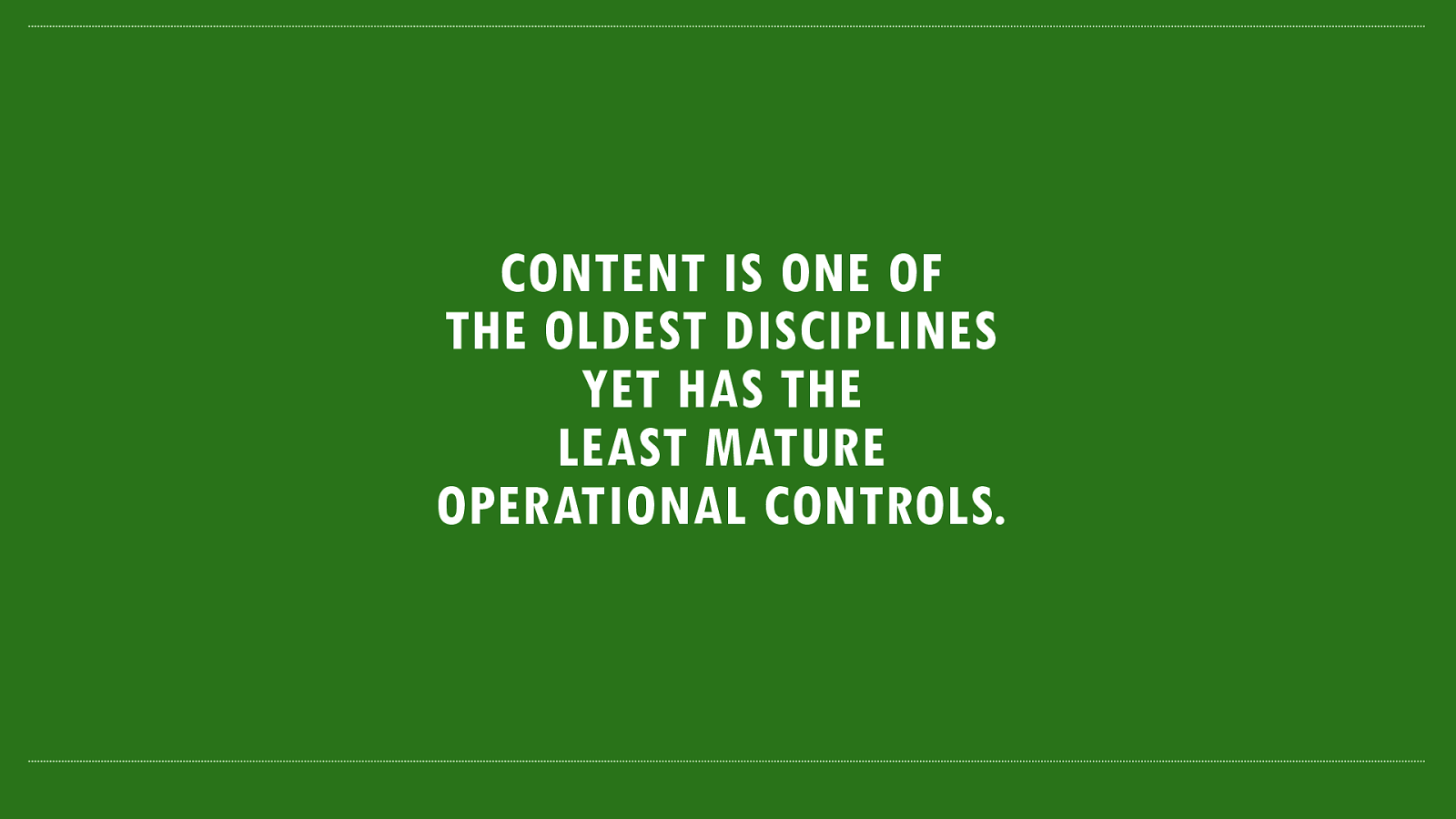
CONTENT IS ONE OF THE OLDEST DISCIPLINES YET HAS THE LEAST MATURE OPERATIONAL CONTROLS.
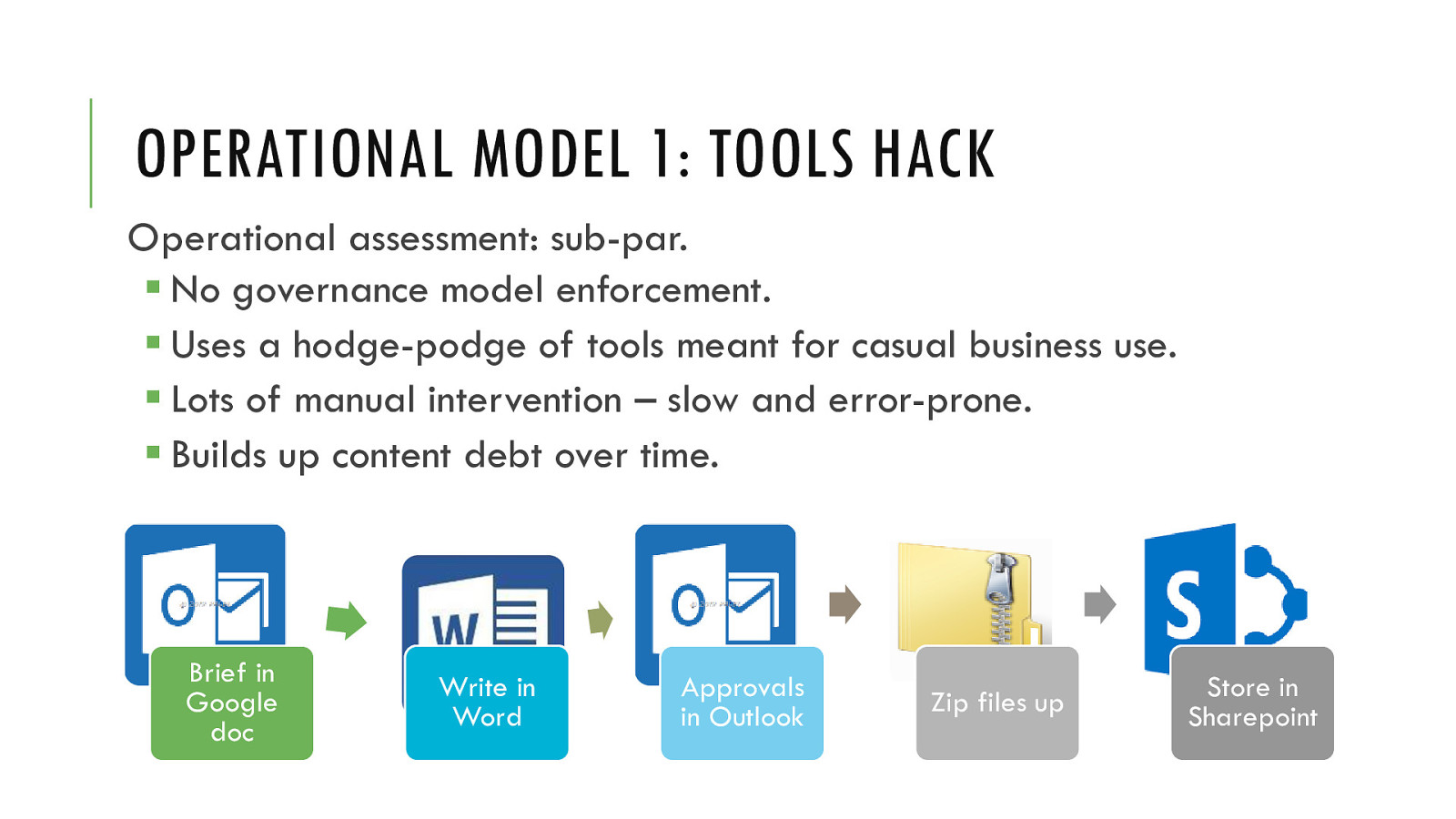
OPERATIONAL MODEL 1: TOOLS HACK
Operational assessment: sub-par. ▪ No governance model enforcement. ▪ Uses a hodge-podge of tools meant for casual business use. ▪ Lots of manual intervention – slow and error-prone. ▪ Builds up content debt over time.
Process Brief in Google doc Write in Word Approvals in Outlook Zip files up Store in Sharepoint
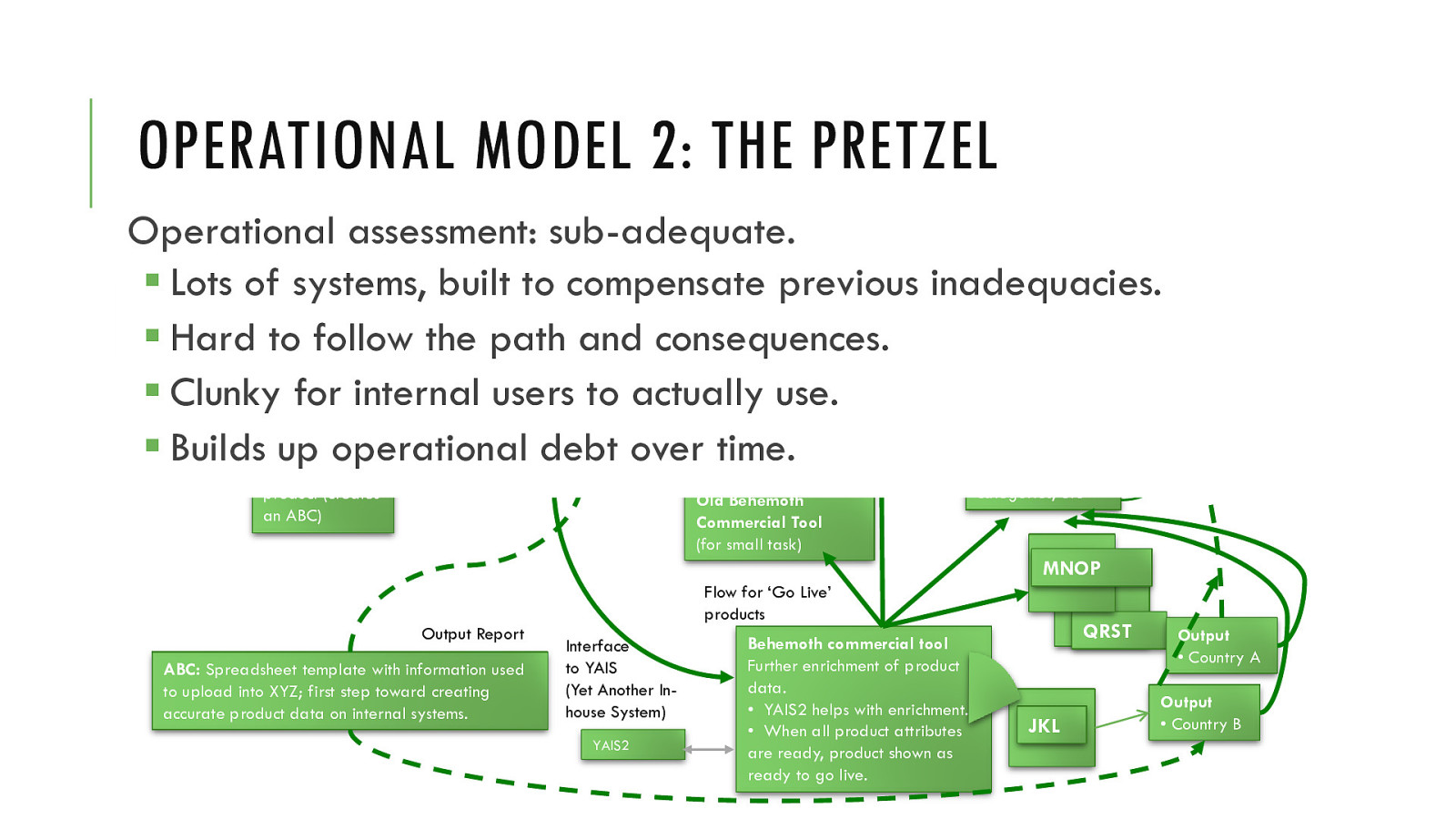
OPERATIONAL MODEL 2: THE PRETZEL
Operational assessment: sub-adequate. ▪ Lots of systems, built to compensate for previous inadequacies. ▪ Hard to follow the path and consequences. ▪ Clunky for internal users to actually use. ▪ Builds up operational debt over time.
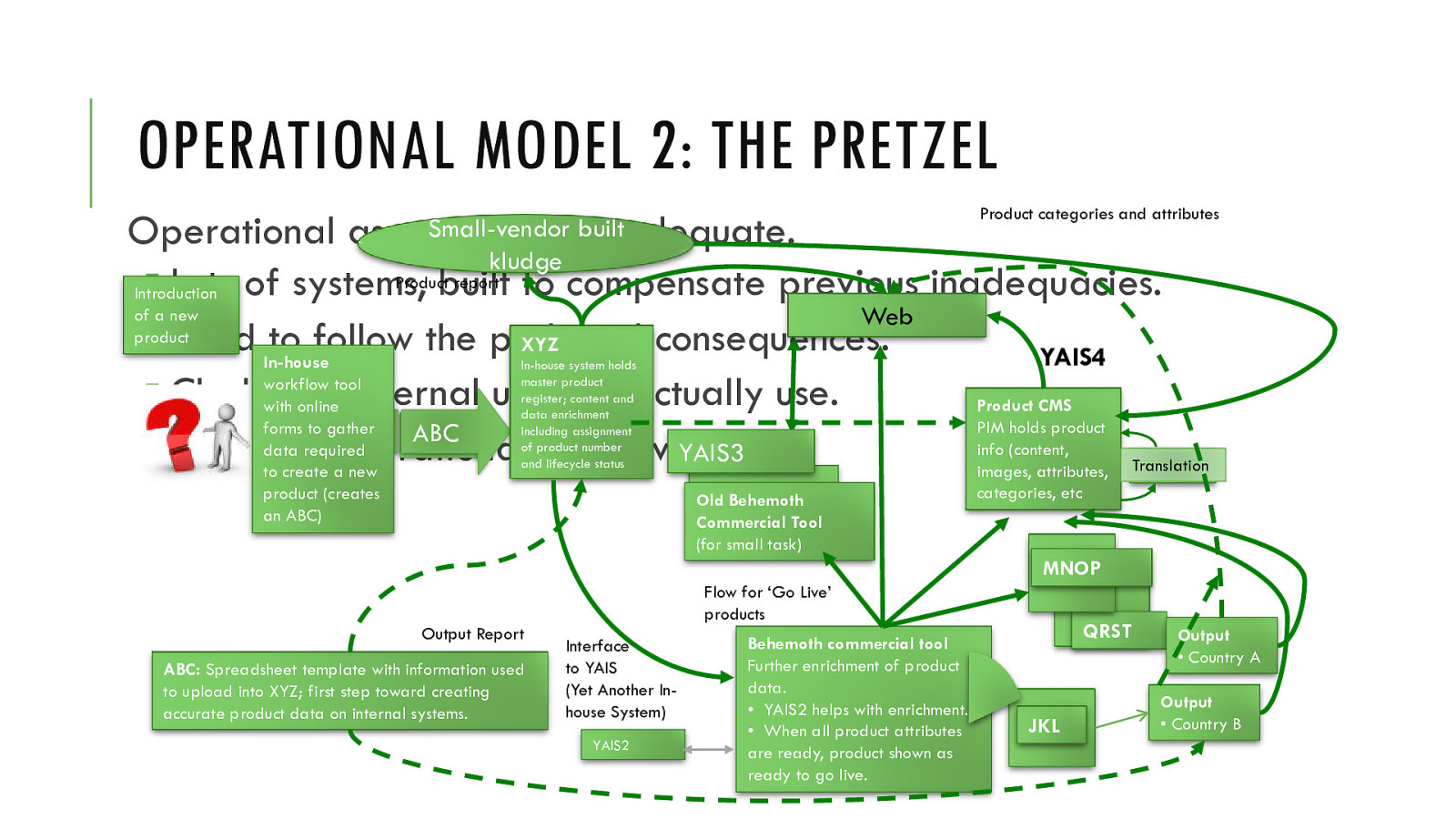
OPERATIONAL MODEL 2: THE PRETZEL
Operational assessment: sub-adequate. ▪ Lots of systems, built to compensate for previous inadequacies. ▪ Hard to follow the path and consequences. ▪ Clunky for internal users to actually use. ▪ Builds up operational debt over time.
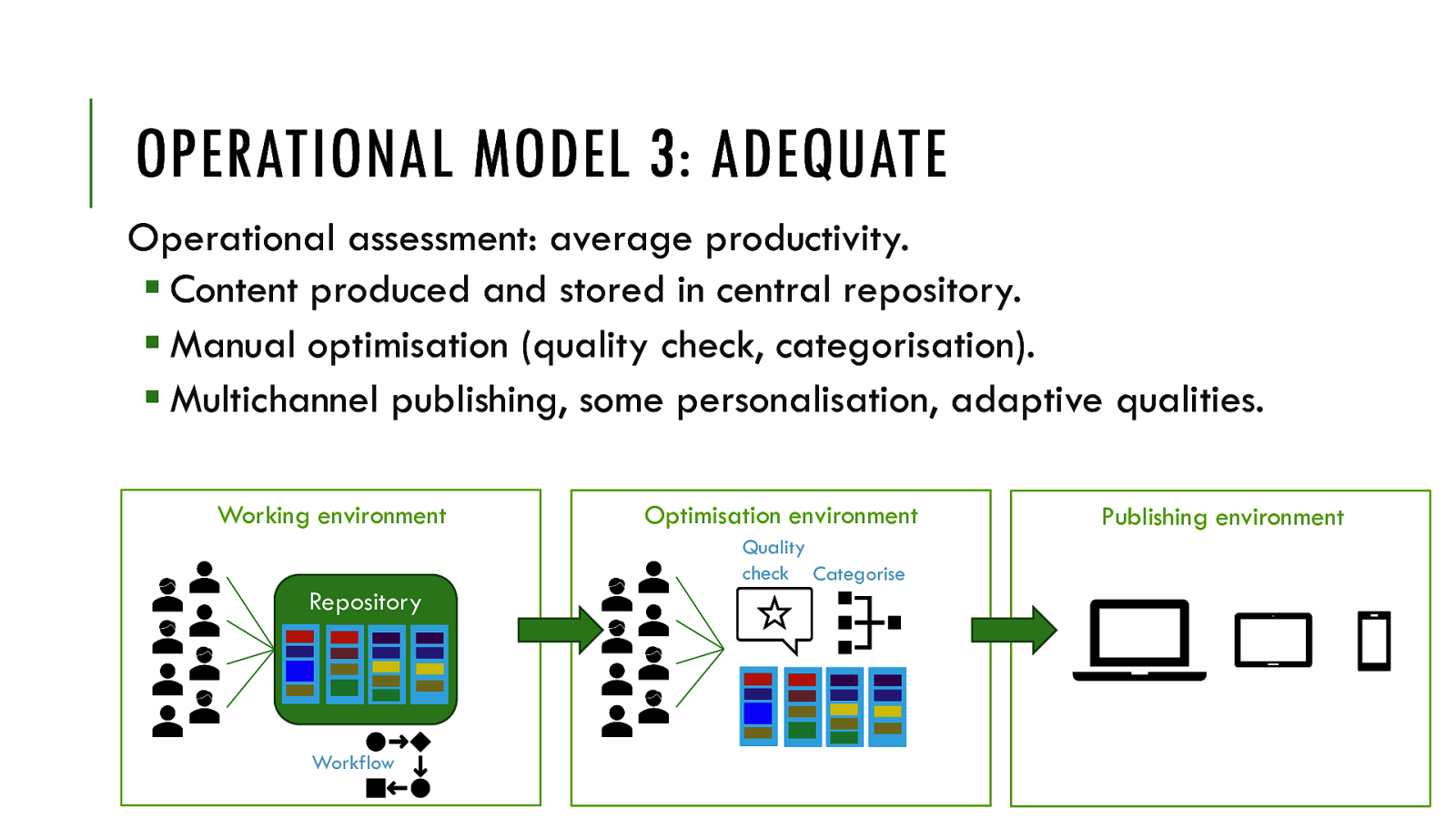
OPERATIONAL MODEL 3: ADEQUATE
Operational assessment: average productivity. ▪ Content produced and stored in central repository. ▪ Manual optimisation (quality check, categorisation). ▪ Multichannel publishing, some personalisation, adaptive qualities.
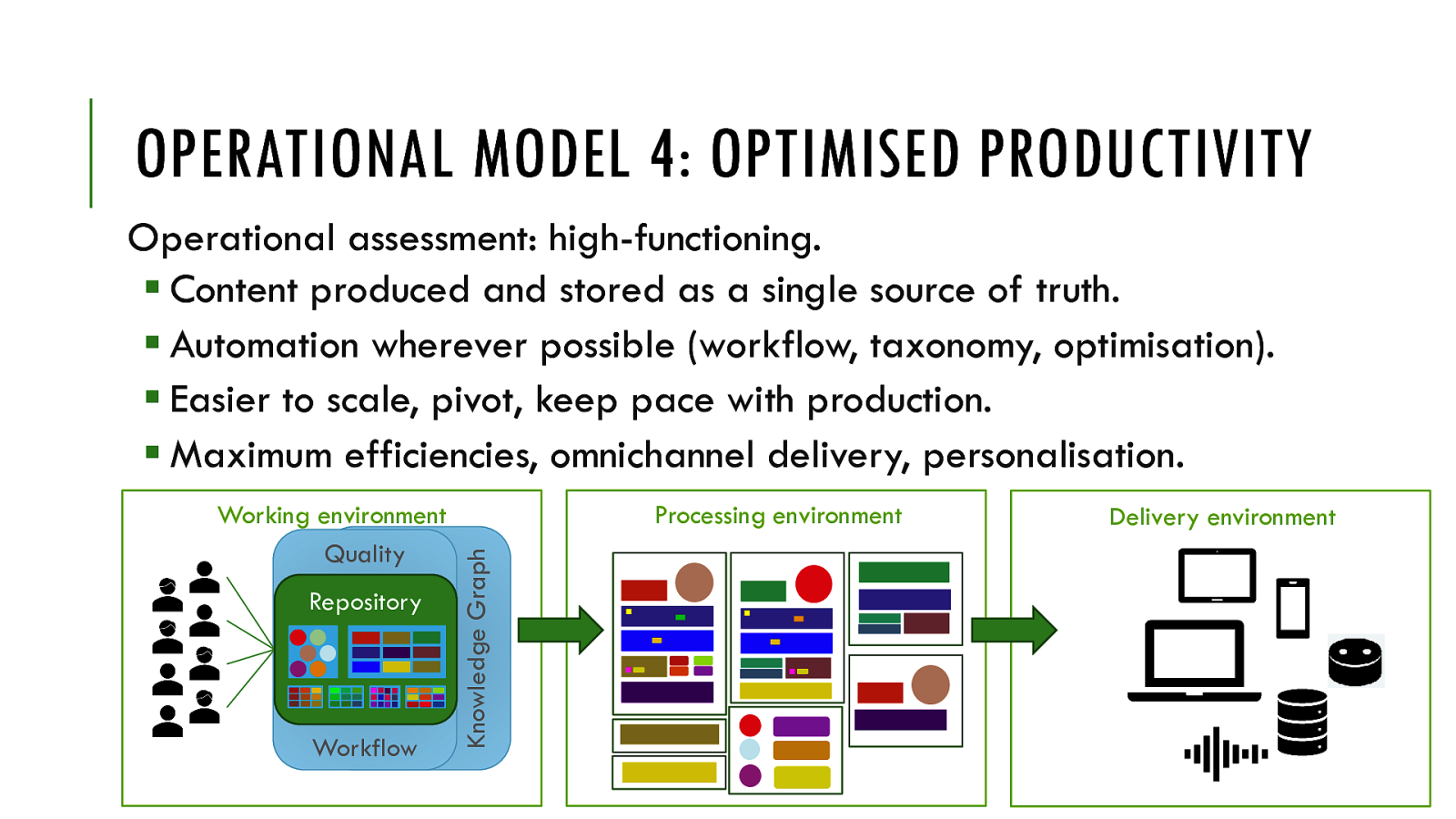
OPERATIONAL MODEL 4: OPTIMISED PRODUCTIVITY
Operational assessment: high-functioning. ▪ Content produced and stored as a single source of truth. ▪ Automation wherever possible (workflow, taxonomy, optimisation). ▪ Easier to scale, pivot, keep pace with production. ▪ Maximum efficiencies, omnichannel delivery, personalisation.
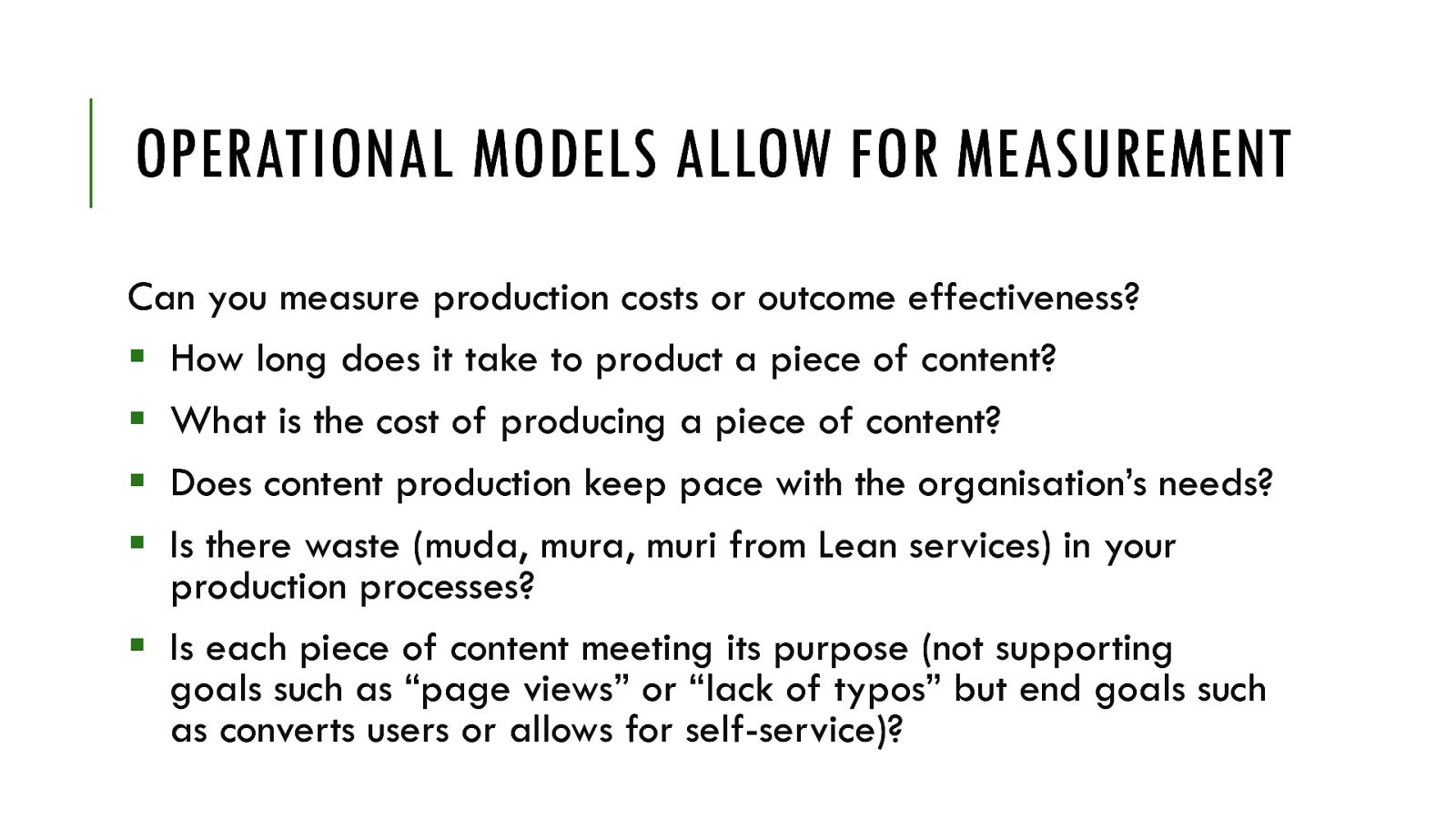
OPERATIONAL MODELS ALLOW FOR MEASUREMENT
Can you measure production costs or outcome effectiveness? ▪ How long does it take to product a piece of content? ▪ What is the cost of producing a piece of content? ▪ Does content production keep pace with the organisation’s needs? ▪ Is there waste (muda, mura, muri from Lean services) in your production processes? ▪ Is each piece of content meeting its purpose (not supporting goals such as “page views” or “lack of typos” but end goals such as converts users or allows for self-service)?
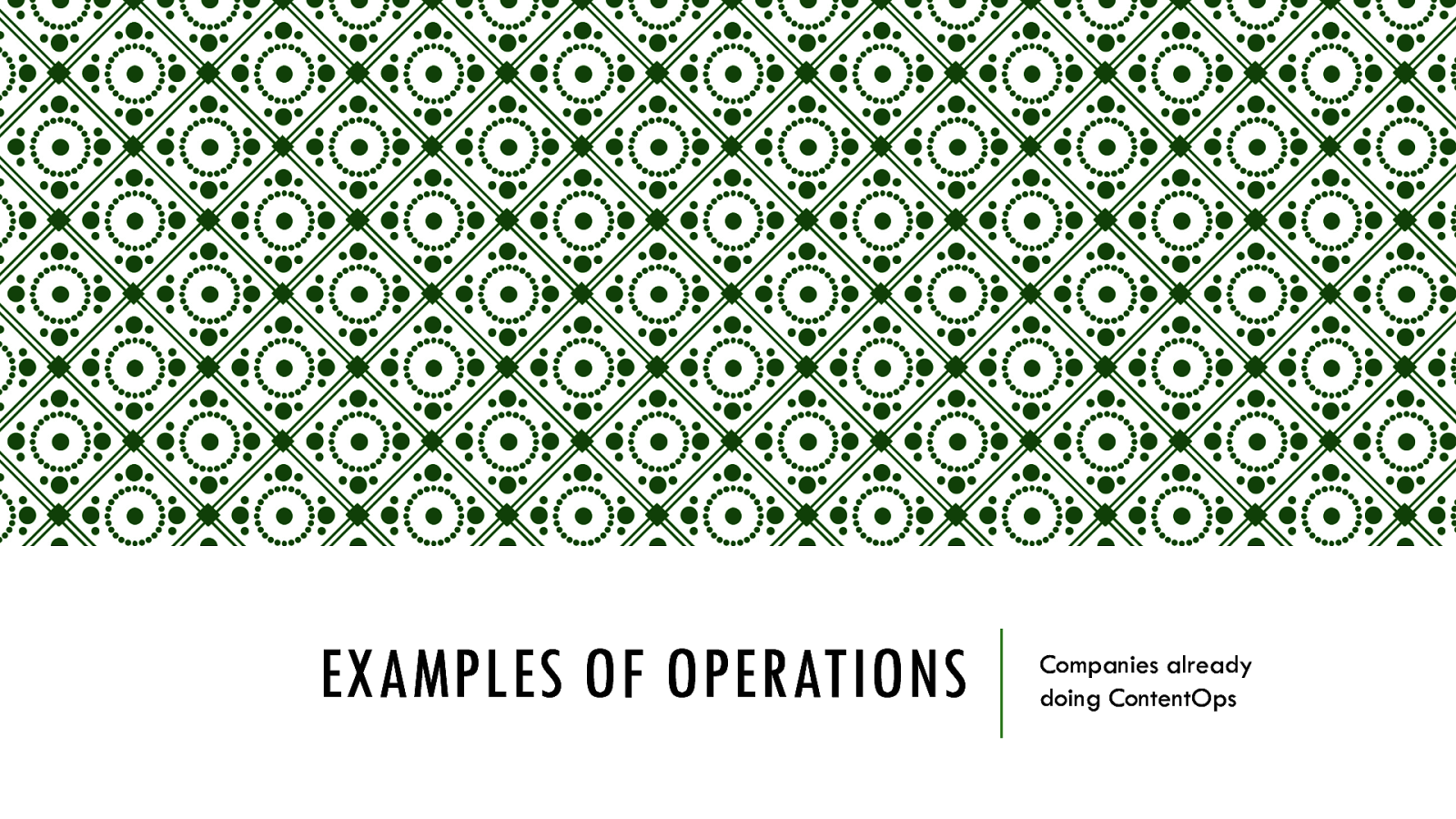
EXAMPLES OF OPERATIONS
Companies already doing ContentOps
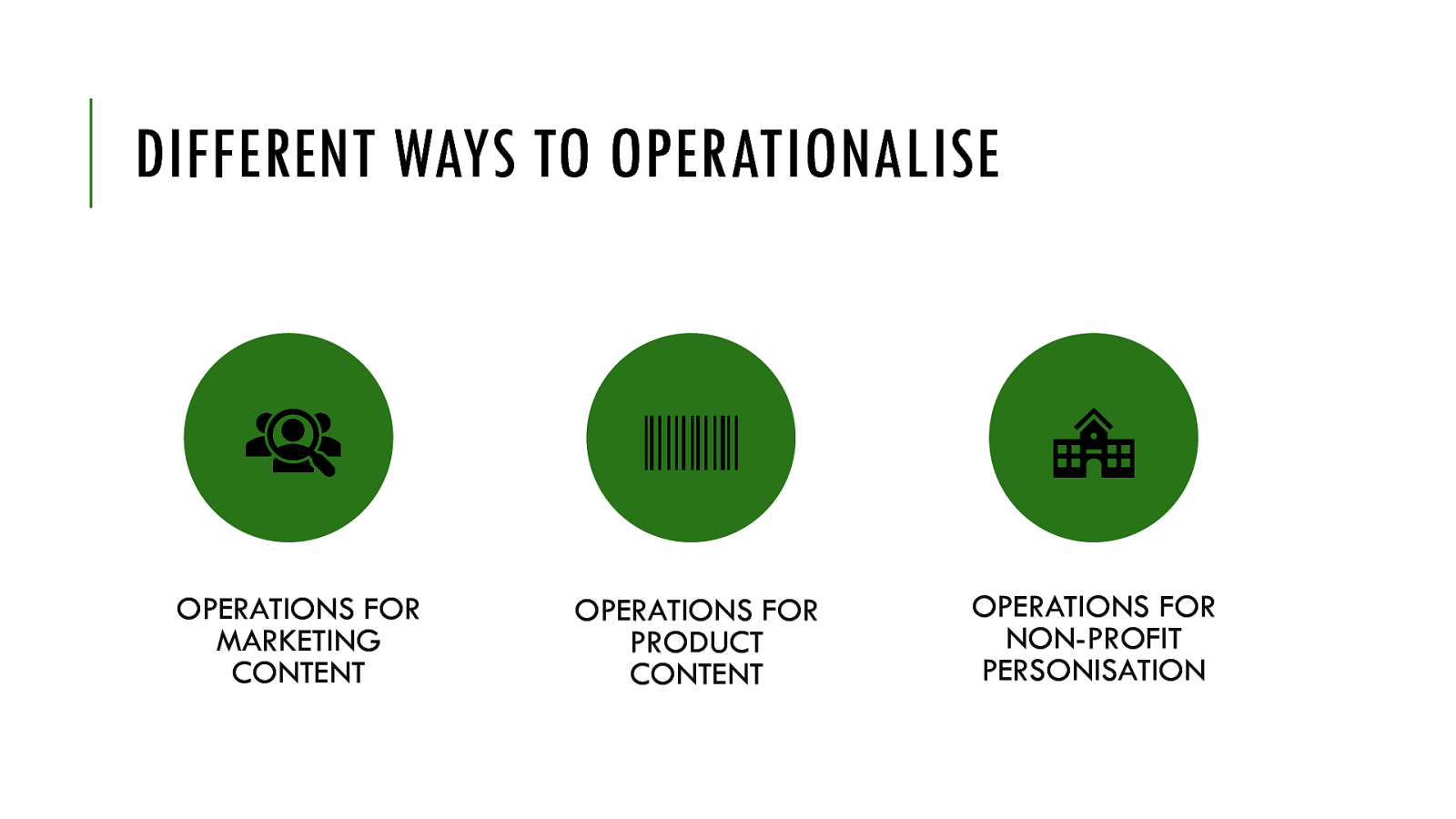
DIFFERENT WAYS TO OPERATIONALISE
OPERATIONS FOR MARKETING CONTENT OPERATIONS FOR PRODUCT CONTENT OPERATIONS FOR NON-PROFIT PERSONISATION
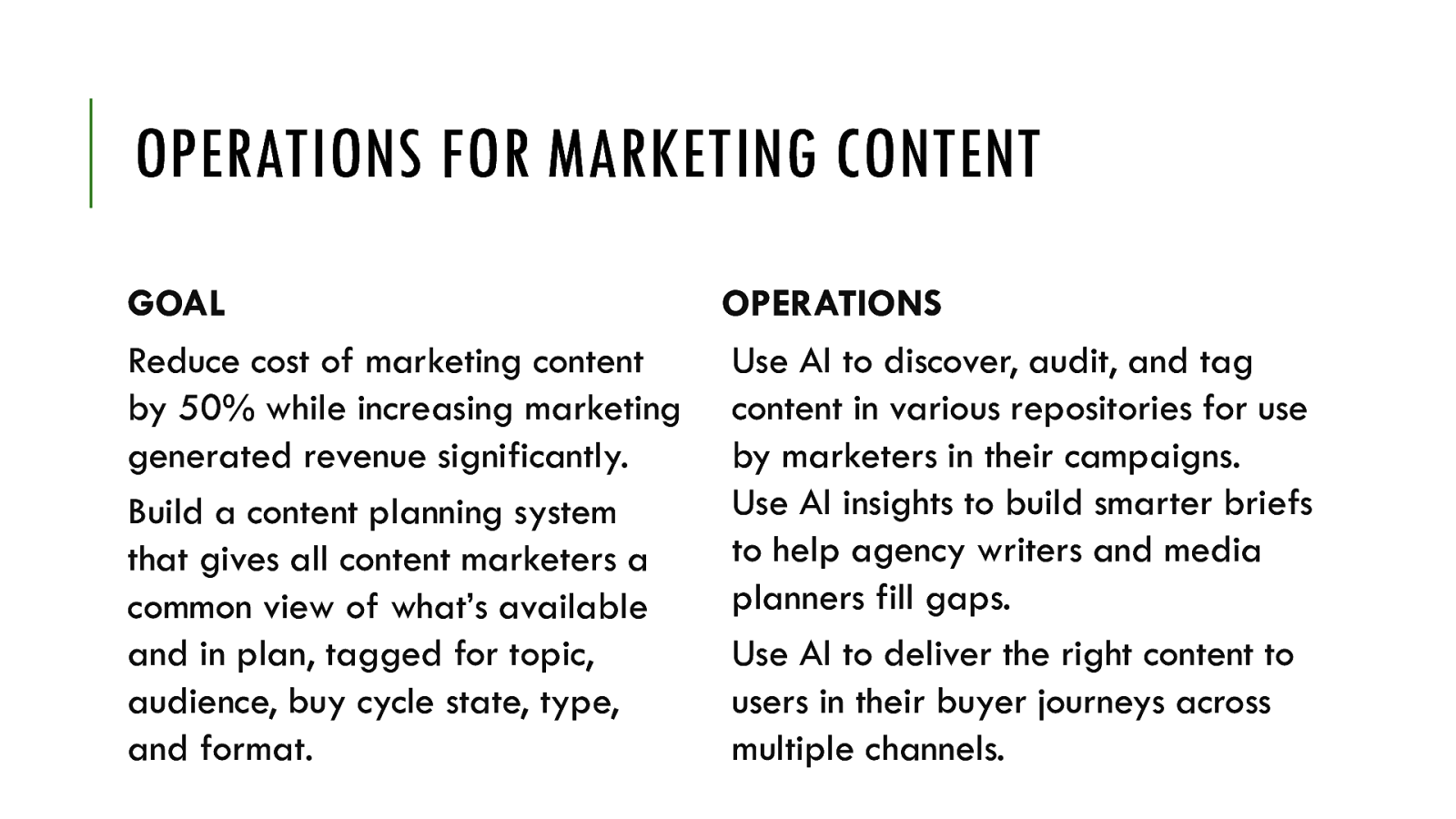
OPERATIONS FOR MARKETING CONTENT
GOAL Reduce cost of marketing content by 50% while increasing marketing generated revenue significantly. Build a content planning system that gives all content marketers a common view of what’s available and in plan, tagged for topic, audience, buy cycle state, type, and format.
OPERATIONS Use AI to discover, audit, and tag content in various repositories for use by marketers in their campaigns. Use AI insights to build smarter briefs to help agency writers and media planners fill gaps. Use AI to deliver the right content to users in their buyer journeys across multiple channels.
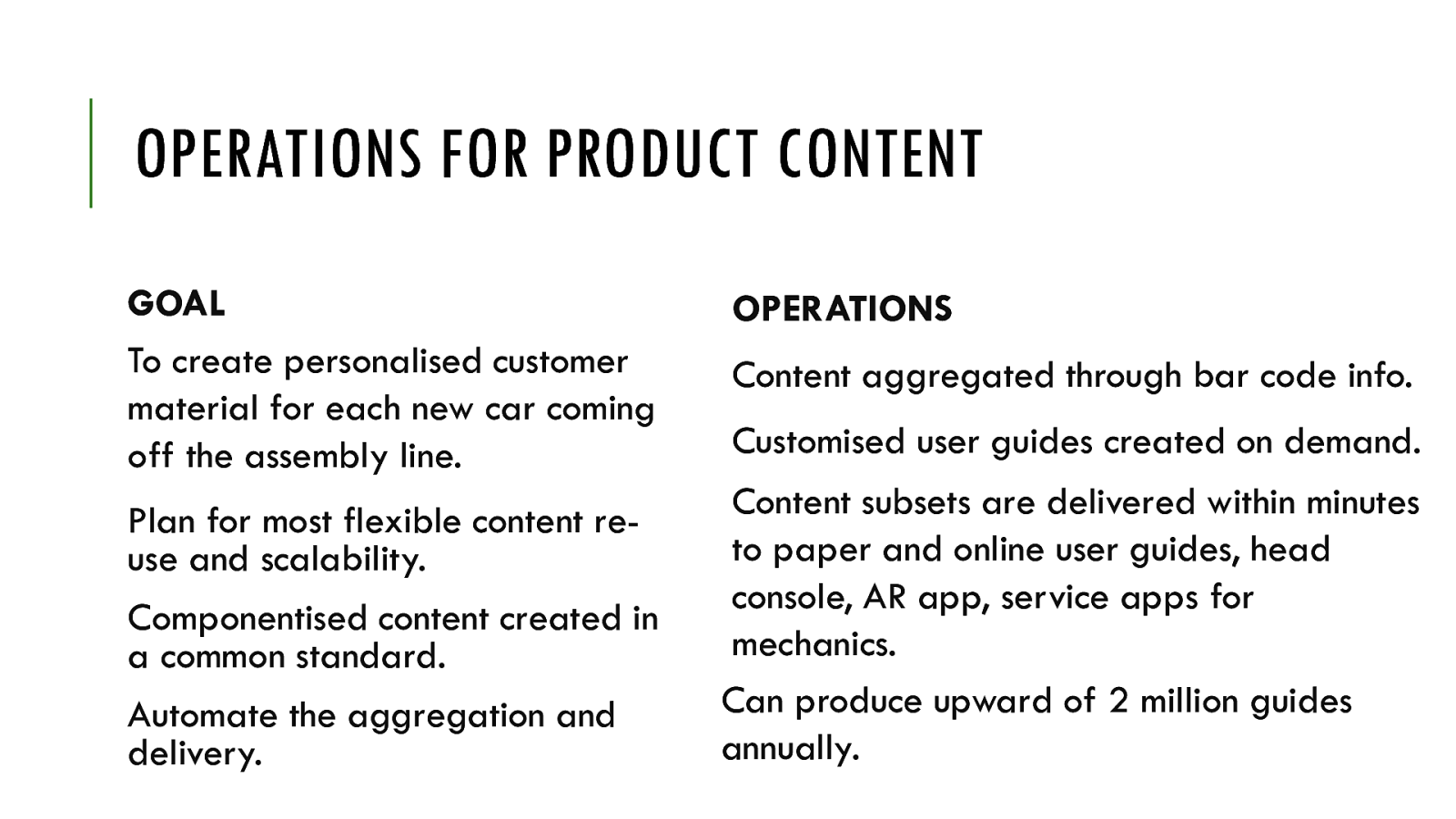
OPERATIONS FOR PRODUCT CONTENT GOAL
GOAL To create personalised customer material for each new car coming off the assembly line. Plan for most flexible content re-use and scalability. Componentised content created in a common standard. Automate the aggregation and delivery.
OPERATIONS Content aggregated through bar code info. Customised user guides created on demand. Content subsets are delivered within minutes to paper and online user guides, head console, AR app, service apps for mechanics. Can produce upward of 2 million guides annually.
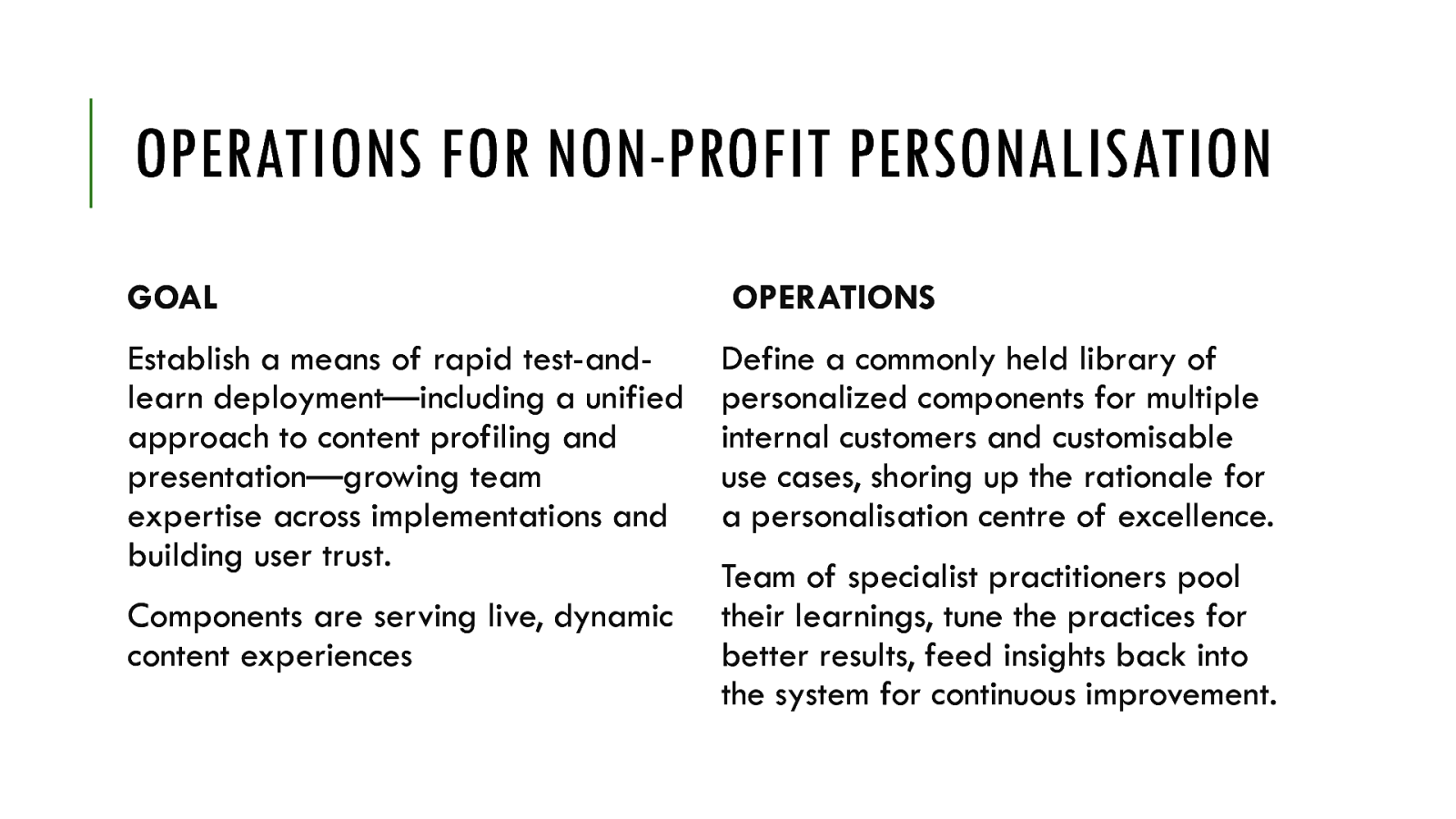
OPERATIONS FOR NON-PROFIT PERSONALISATION GOAL
GOAL Establish a means of rapid test-and-learn deployment—including a unified approach to content profiling and presentation—growing team expertise across implementations and building user trust. Components are serving live, dynamic content experiences
OPERATIONS Define a commonly held library of personalized components for multiple internal customers and customisable use cases, shoring up the rationale for a personalisation centre of excellence. Team of specialist practitioners pool their learnings, tune the practices for better results, feed insights back into the system for continuous improvement.
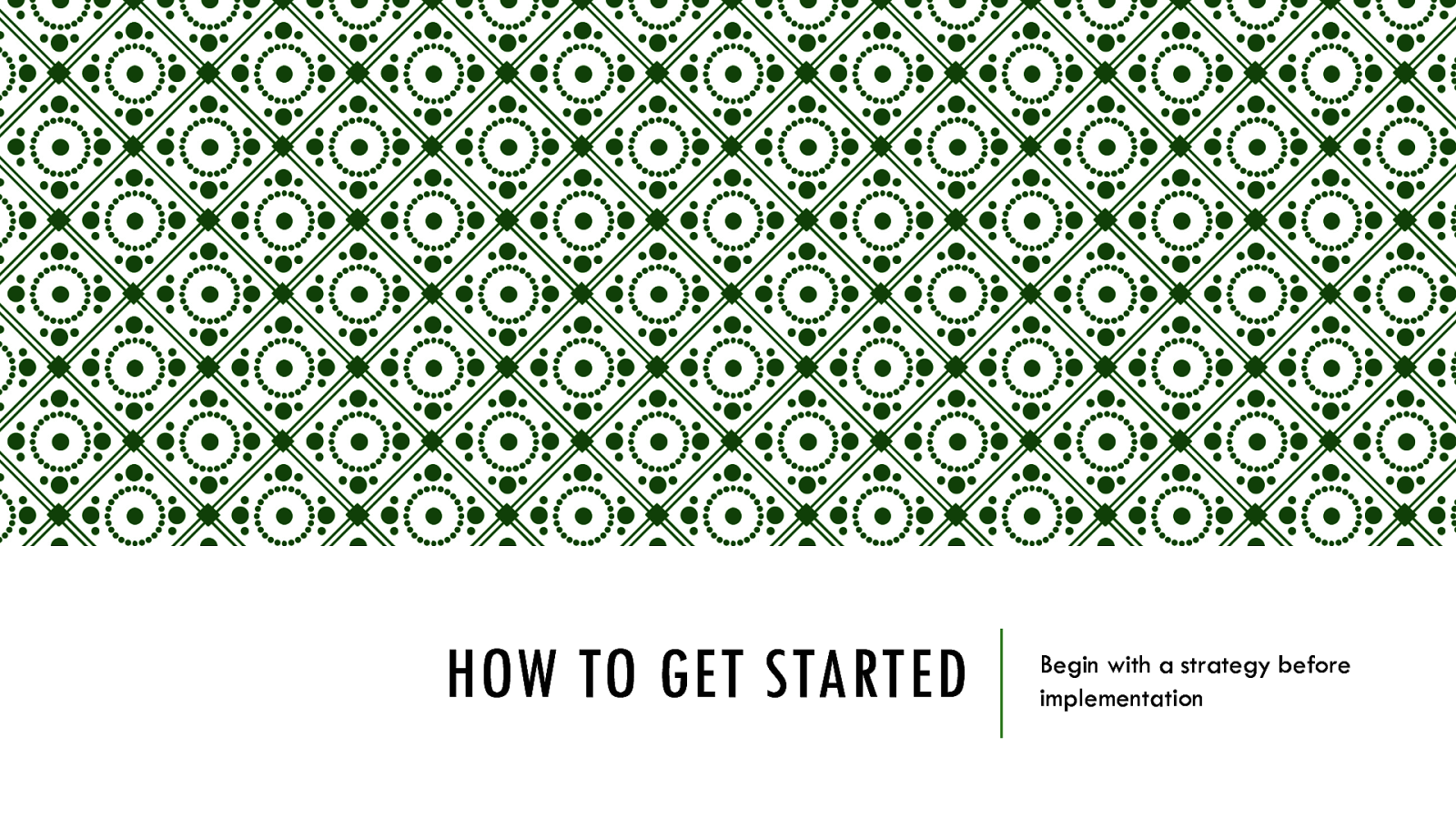
HOW TO GET STARTED
Begin with a strategy before implementation
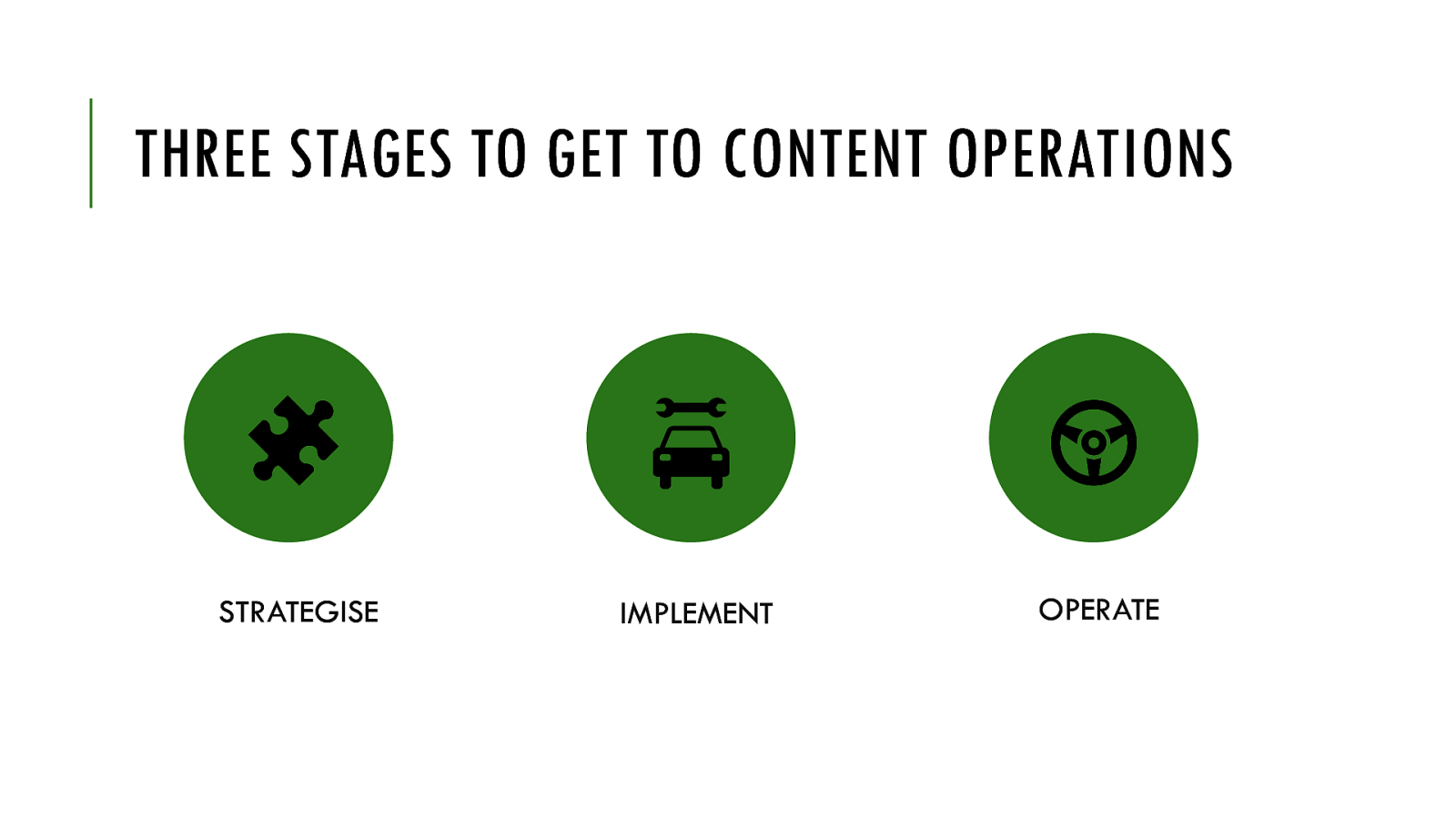
THREE STAGES TO GET TO CONTENT OPERATIONS
STRATEGISE IMPLEMENT OPERATE
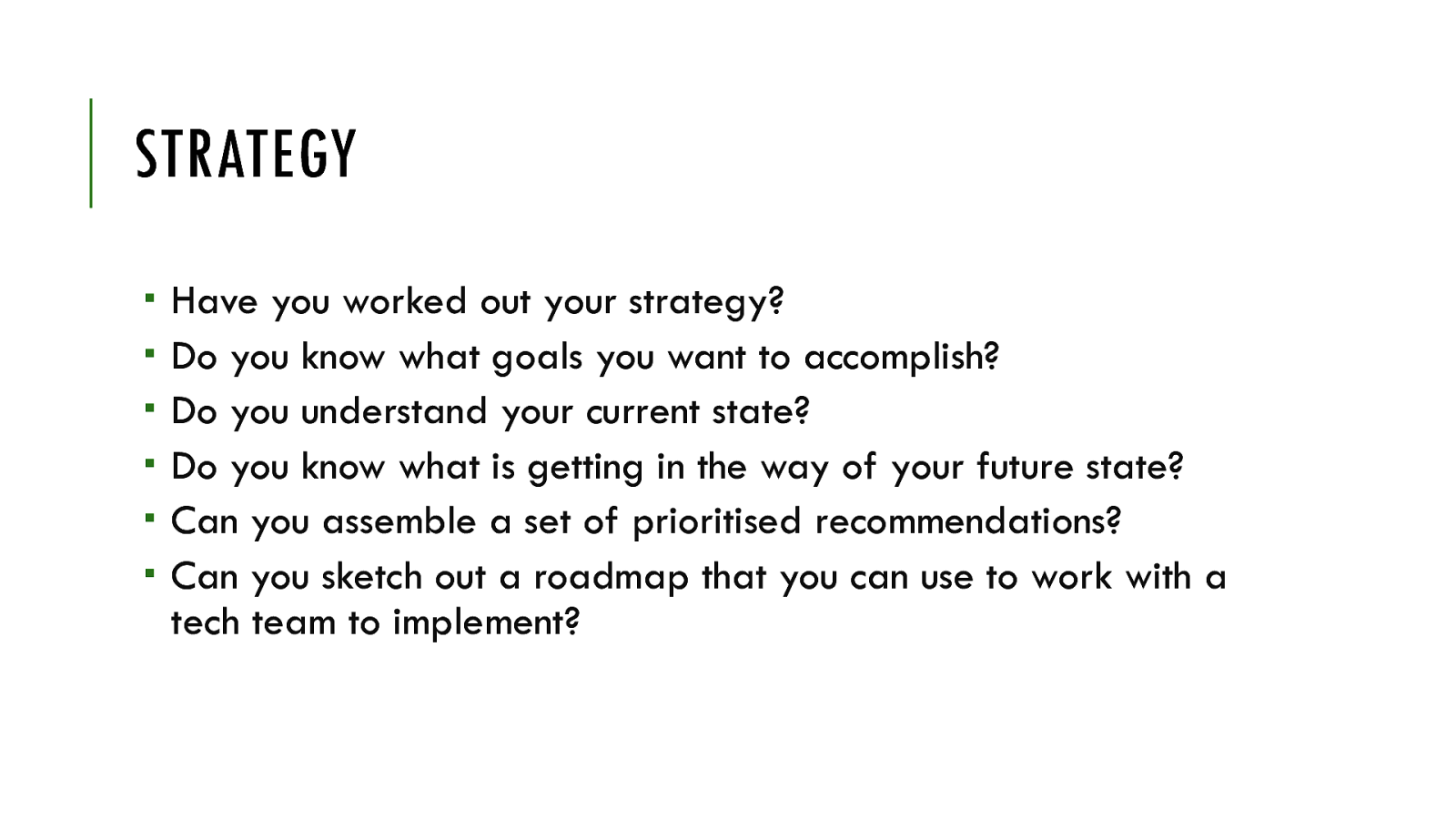
STRATEGY
Have you worked out your strategy? Do you know what goals you want to accomplish? Do you understand your current state? Do you know what is getting in the way of your future state? Can you assemble a set of prioritised recommendations? Can you sketch out a roadmap that you can use to work with a tech team to implement?

IMPLEMENT
Do you have a trusted technology partner with the right skill sets to do the implementation? Will you and the technology partner be able to create a blueprint that won’t be over-engineered or outgrown too soon? Are you able to do a cost-benefit analysis before investing in anything new? Will your technology partner listen to new ideas? Or are they the “you can have anything you want, so long as it’s using the platform that we specialise in” types?
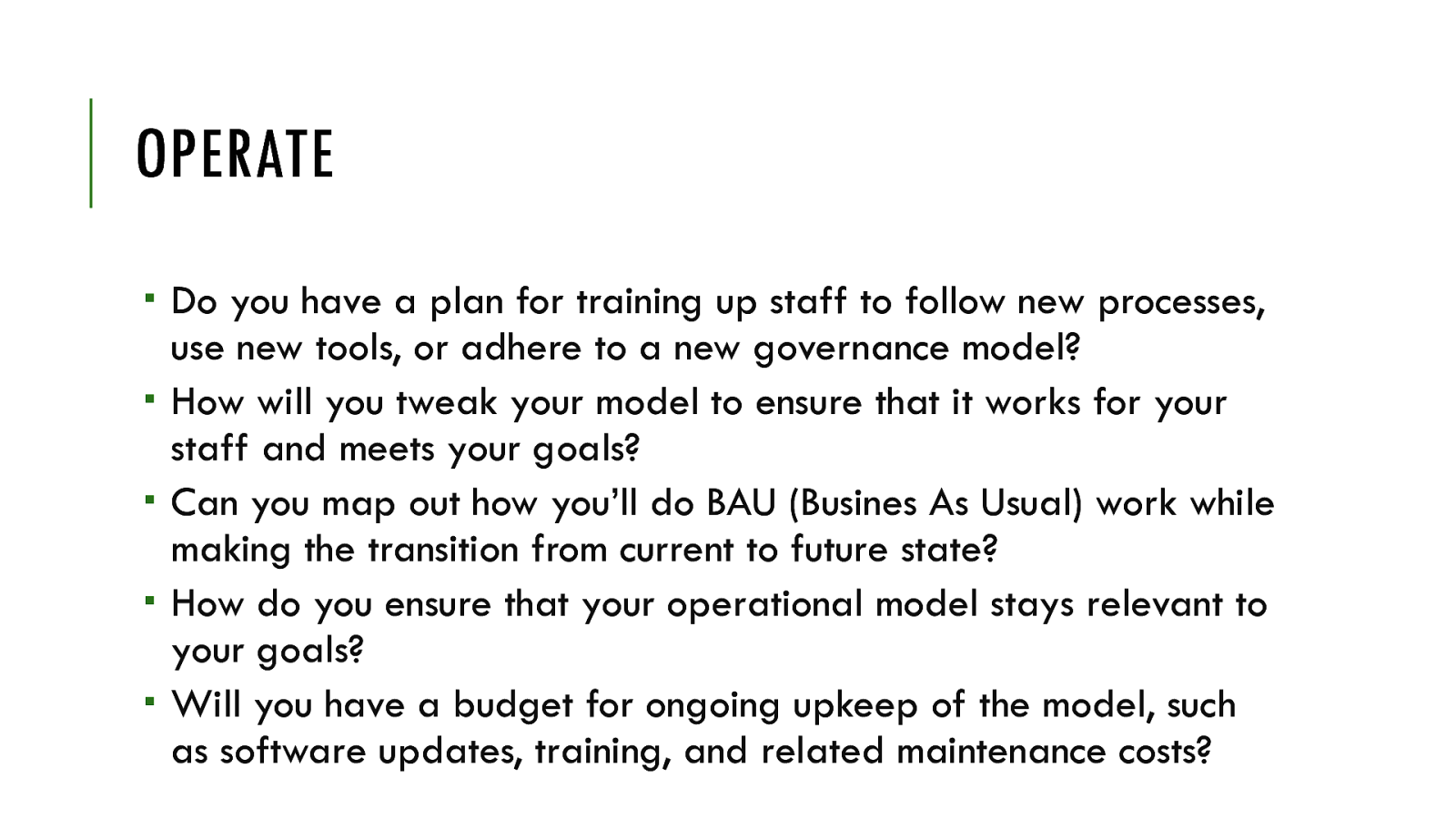
OPERATE
Do you have a plan for training up staff to follow new processes, use new tools, or adhere to a new governance model? How will you tweak your model to ensure that it works for your staff and meets your goals? Can you map out how you’ll do BAU (Busines As Usual) work while making the transition from current to future state? How do you ensure that your operational model stays relevant to your goals? Will you have a budget for ongoing upkeep of the model, such as software updates, training, and related maintenance costs?
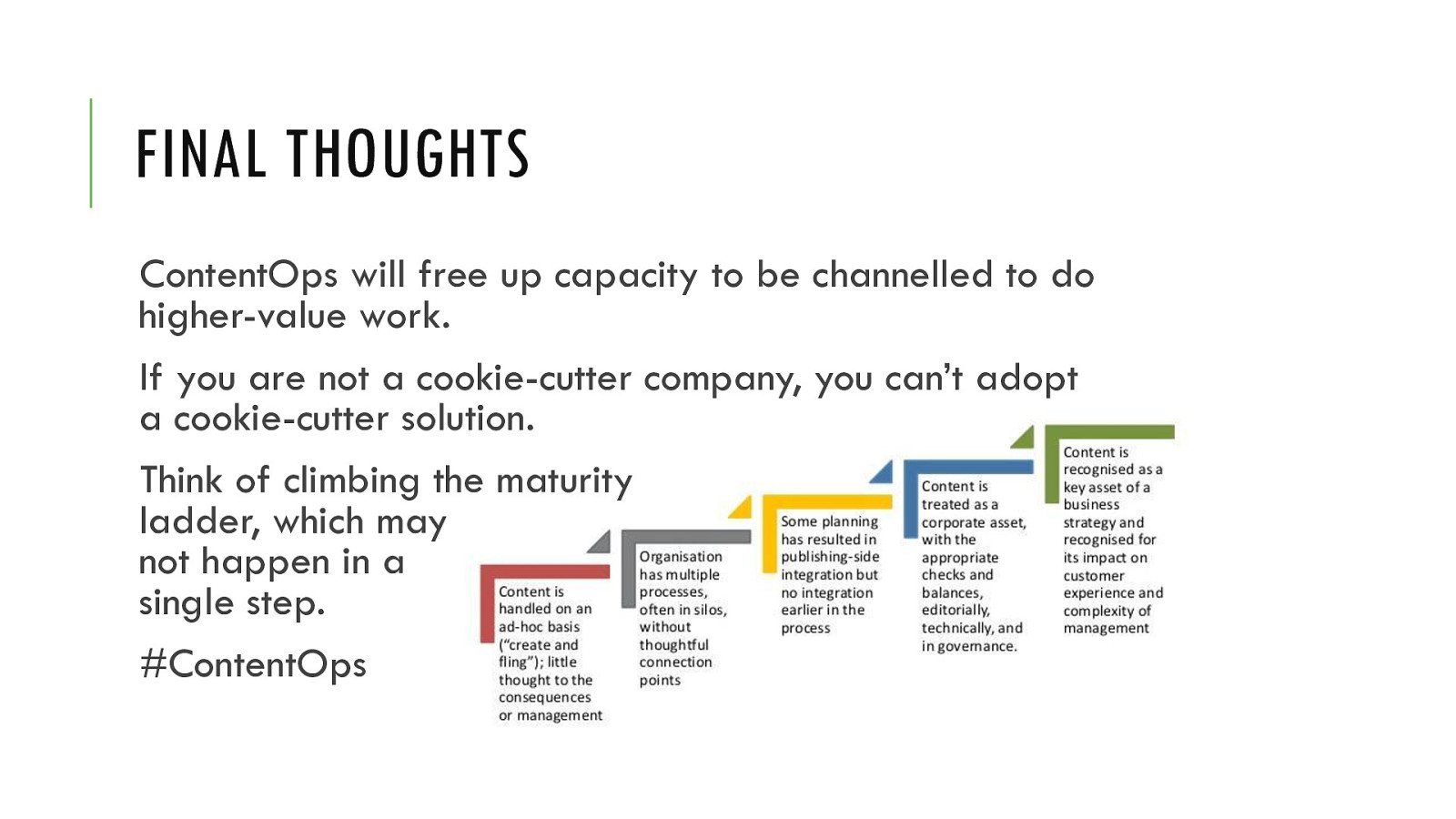
FINAL THOUGHTS
ContentOps will free up capacity to be channelled to do higher-value work. If you are not a cookie-cutter company, you can’t adopt a cookie-cutter solution. Think of climbing the maturity ladder, which may not happen in a single step.
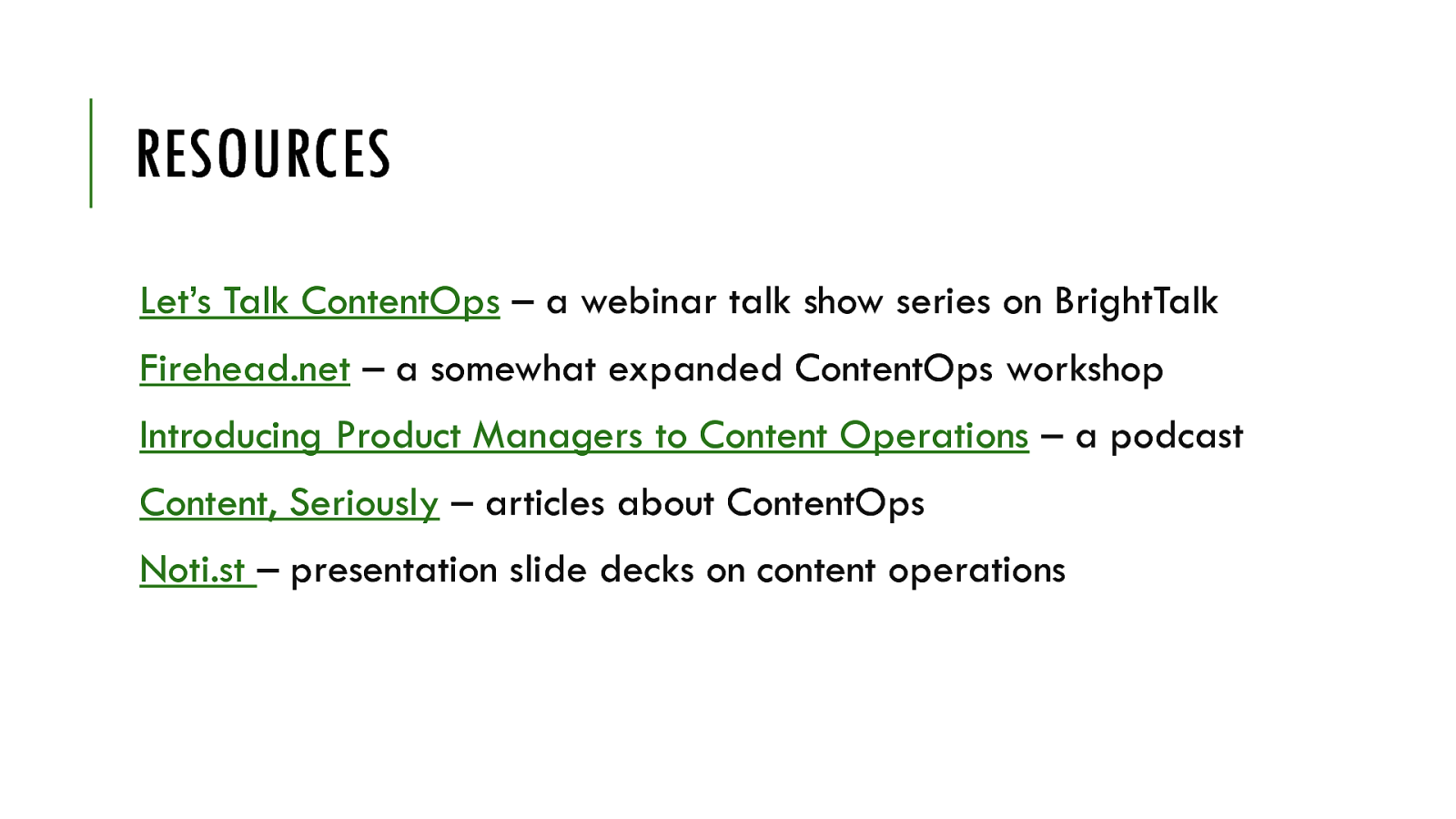
RESOURCES
Let’s Talk ContentOps – a webinar talk show series on BrightTalk Firehead.net – a somewhat expanded ContentOps workshop Introducing Product Managers to Content Operations – a podcast Content, Seriously – articles about ContentOps Noti.st – presentation slide decks on content operations

QUESTIONS?
Contact information Rahel Anne Bailie; Content, Seriously Designing robust content ecosystems London, UK ContentSeriously.co.uk
Industry is starting to embrace the notion of content operations but know little about what it means, other than “something like DevOps only for content”. Learn some of the principles behind ContentOps and different ways that it can be implemented in your own situation.
